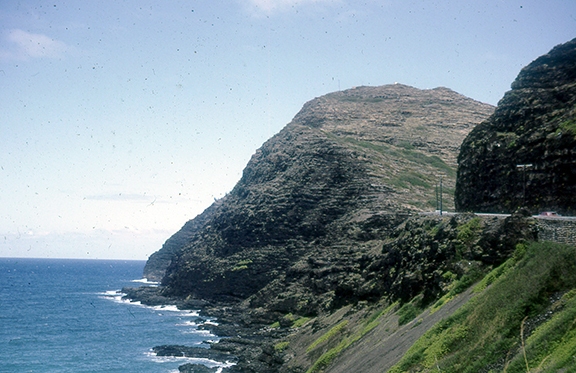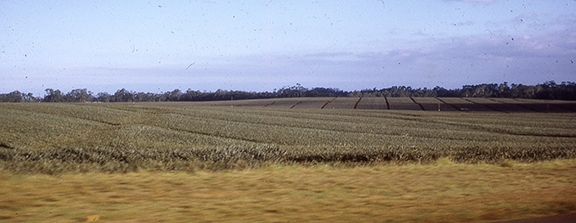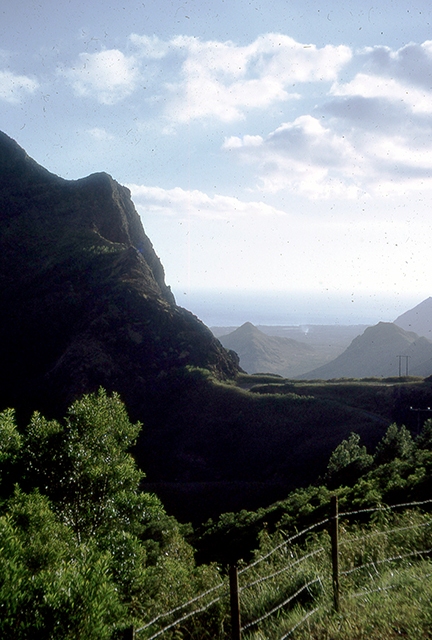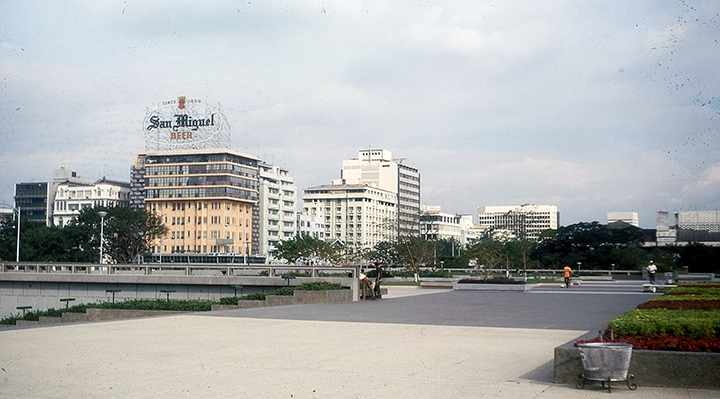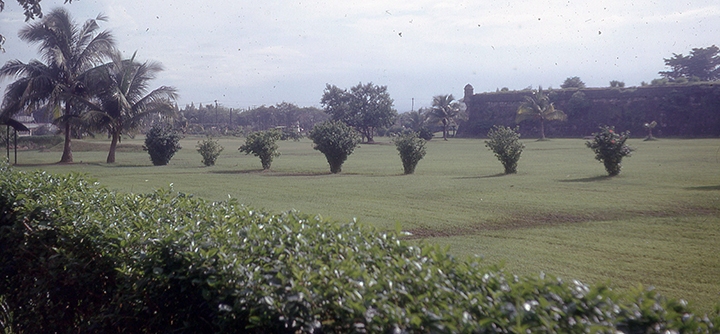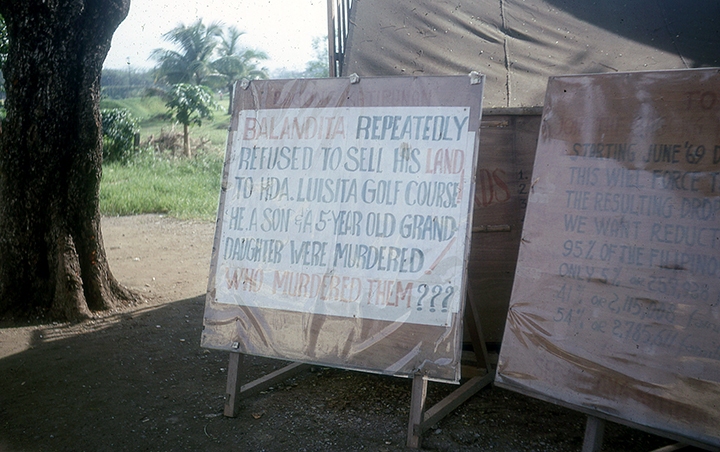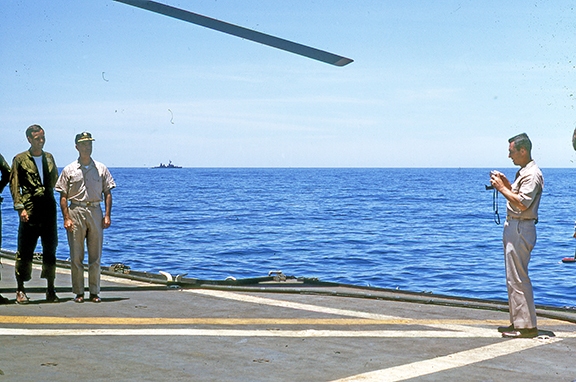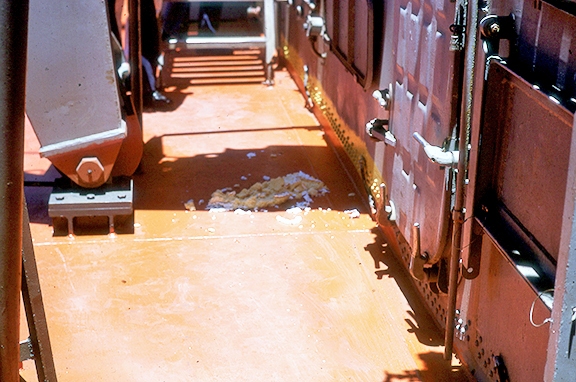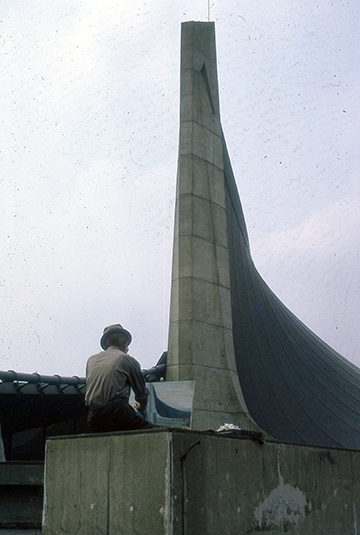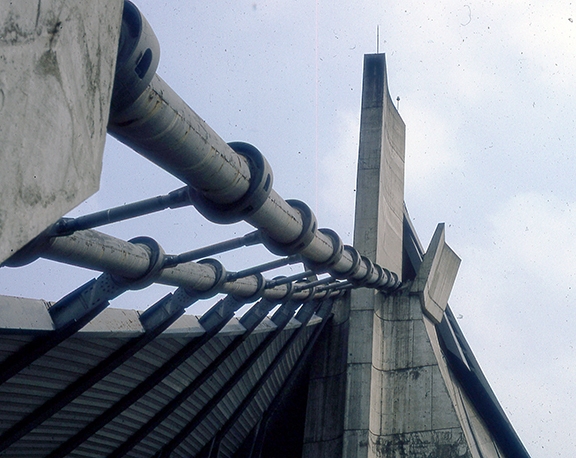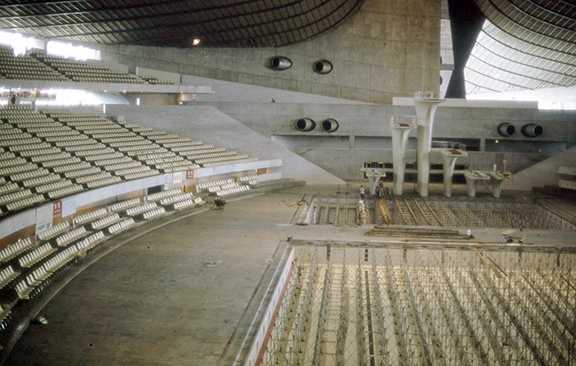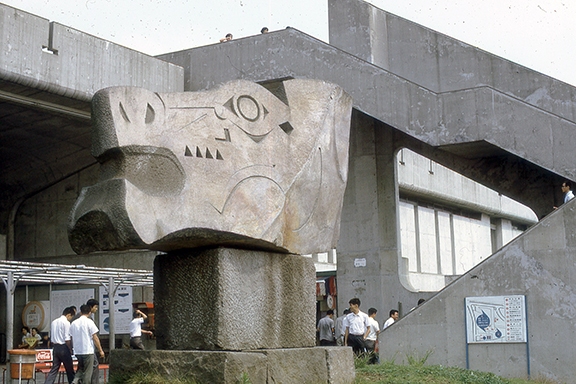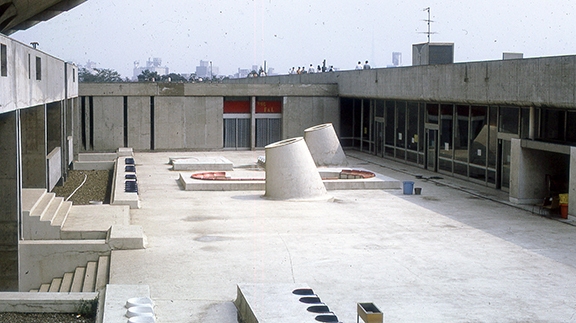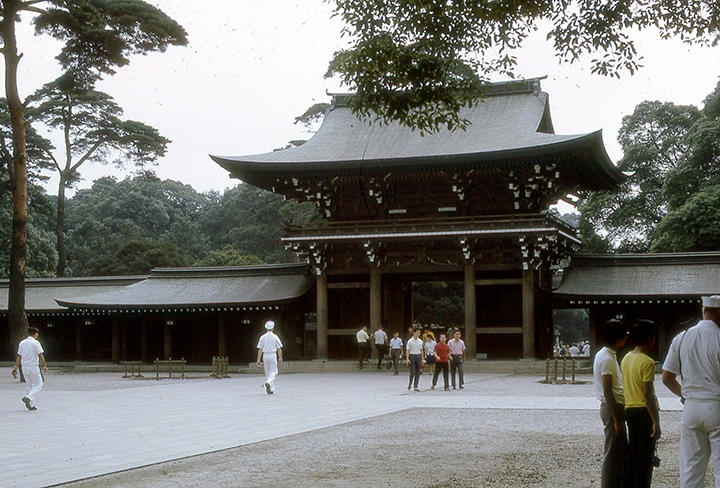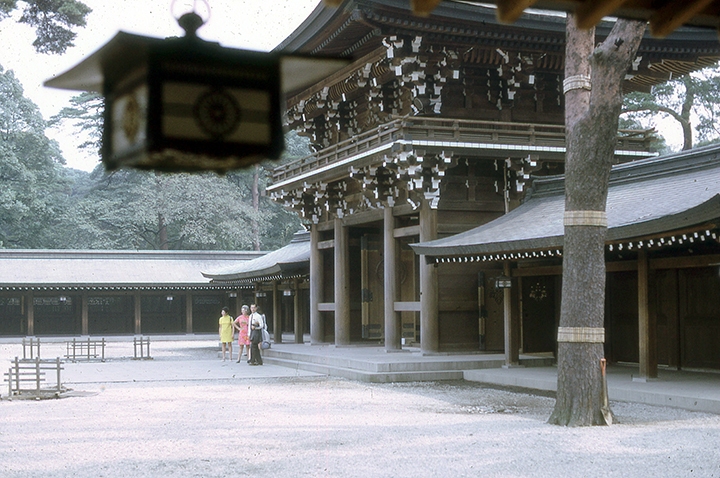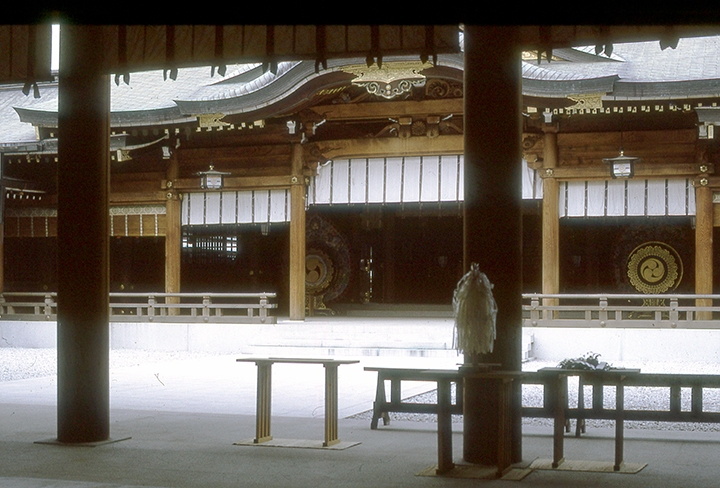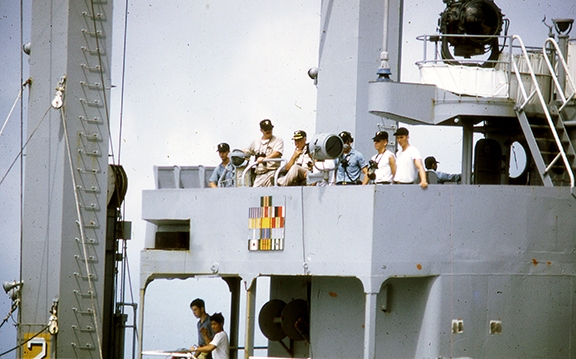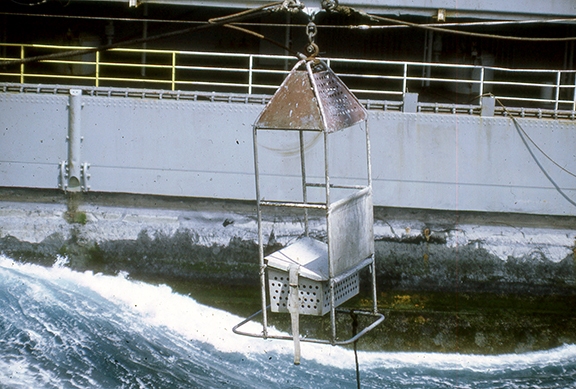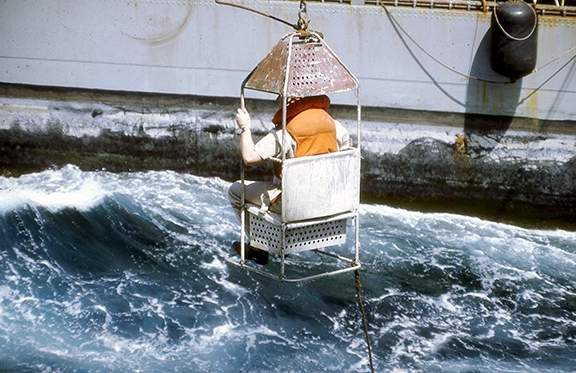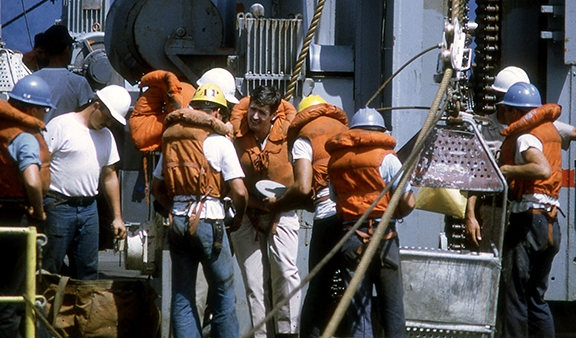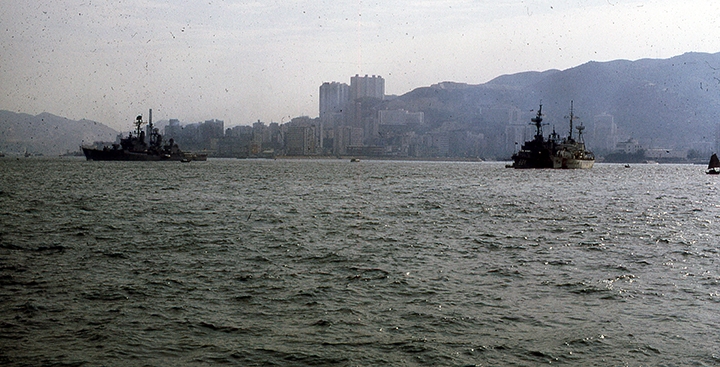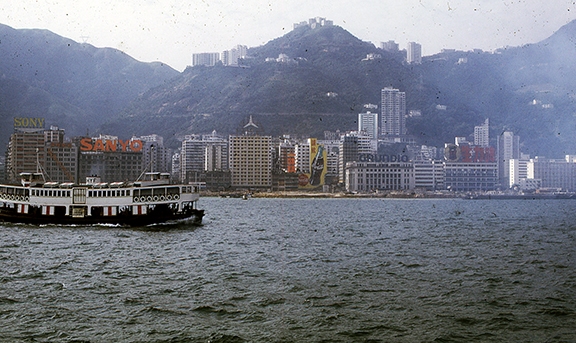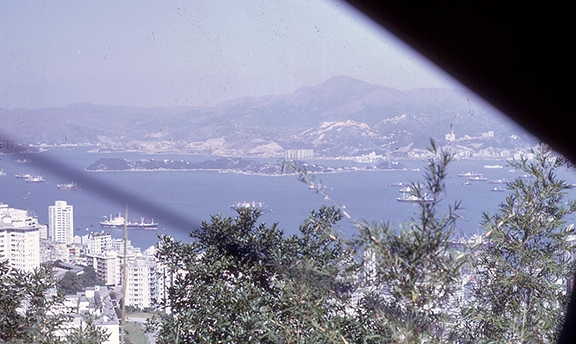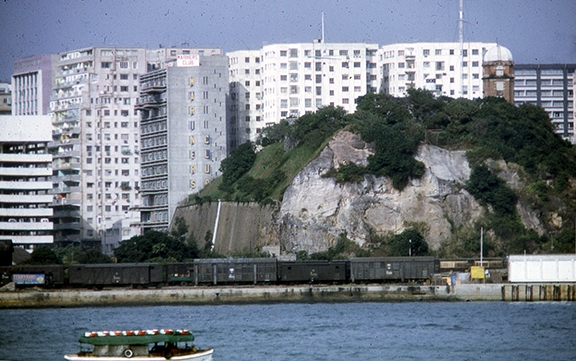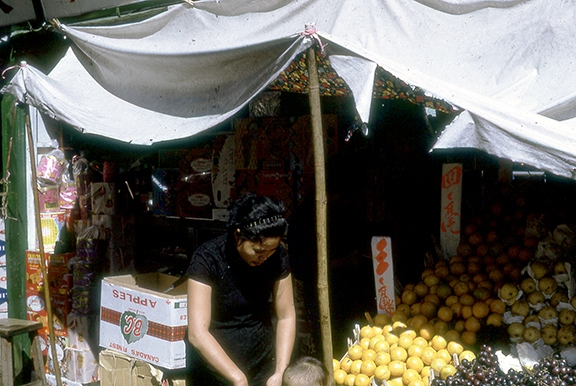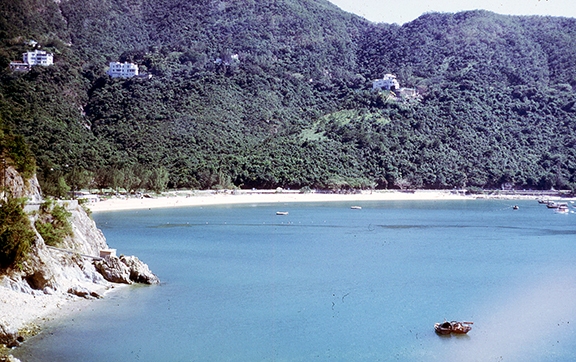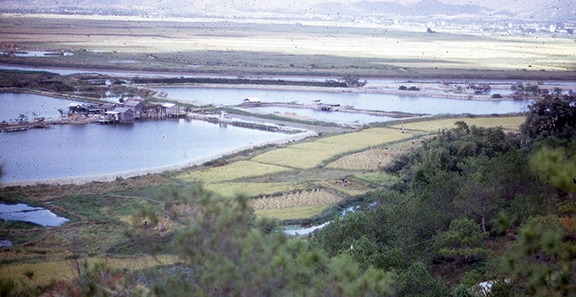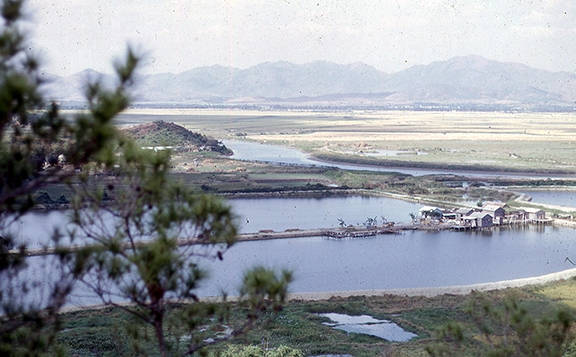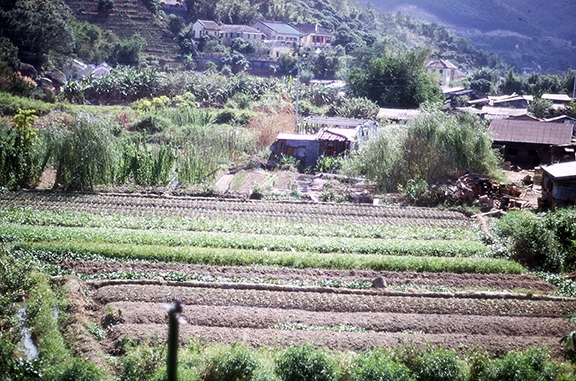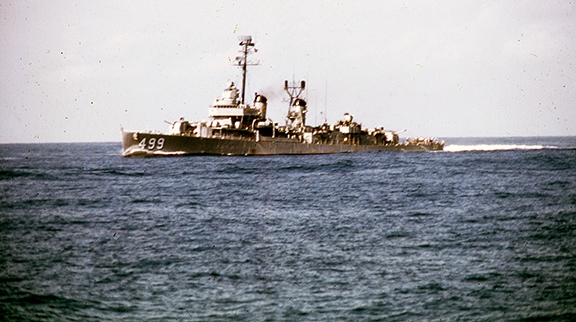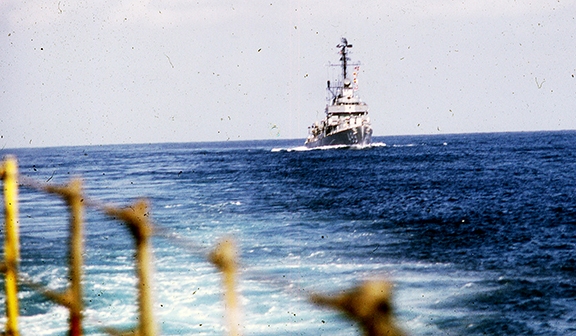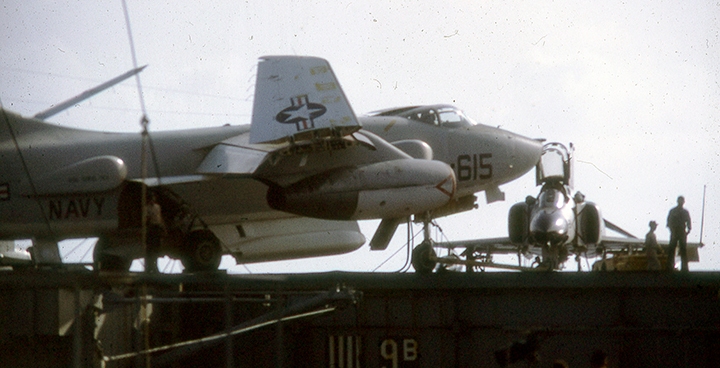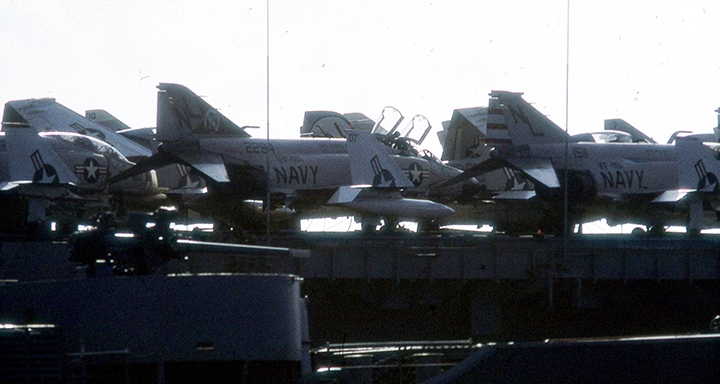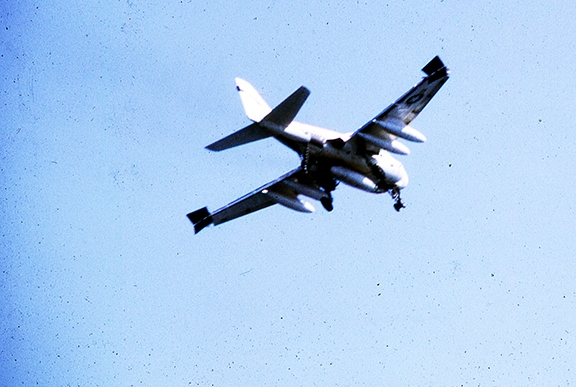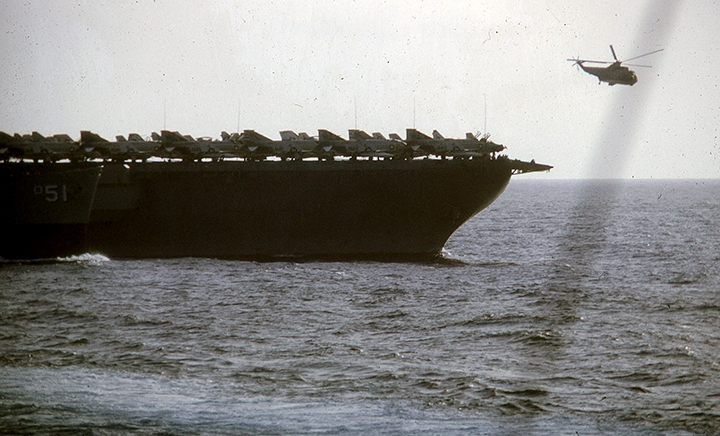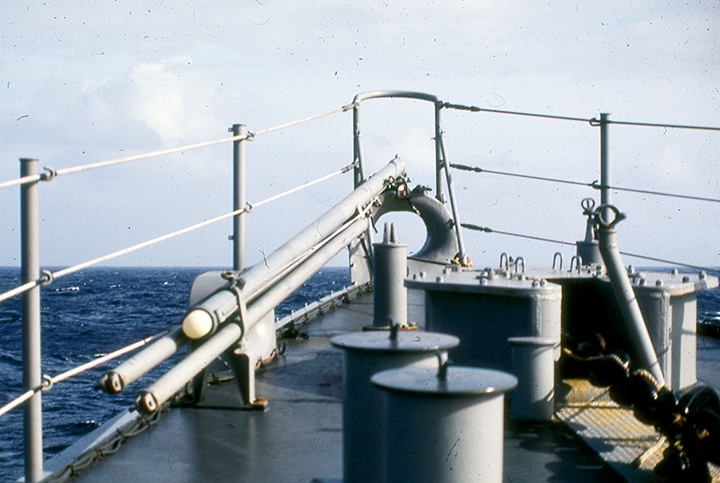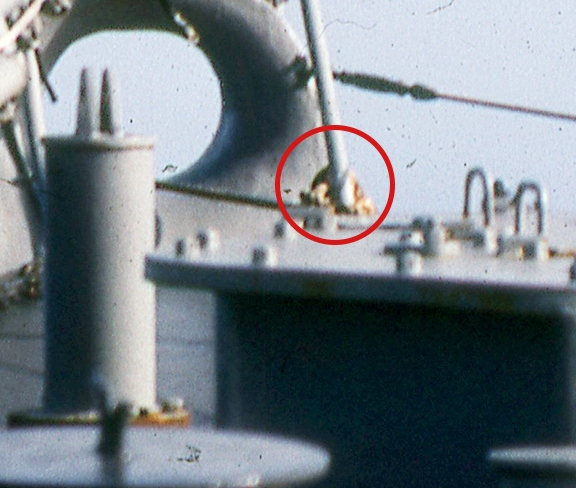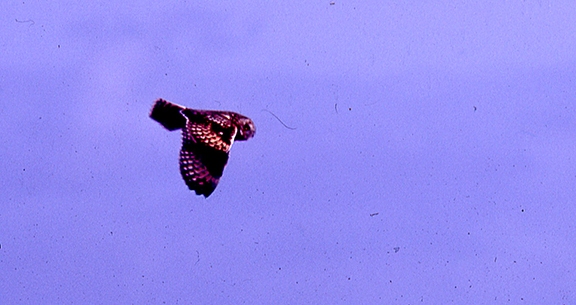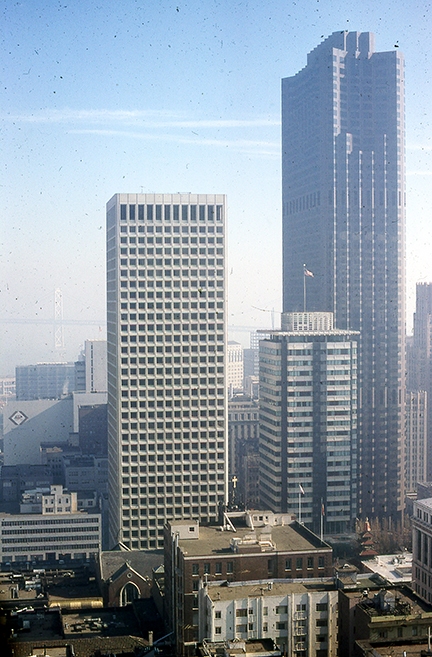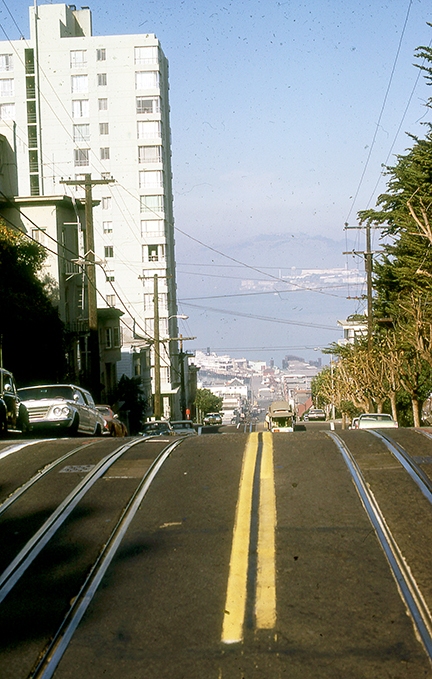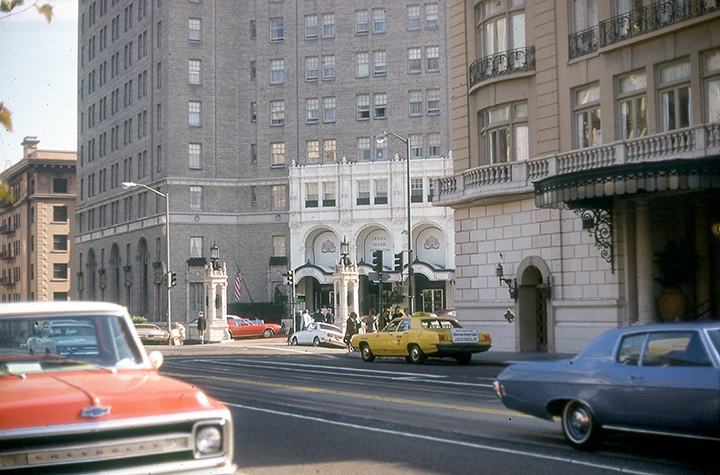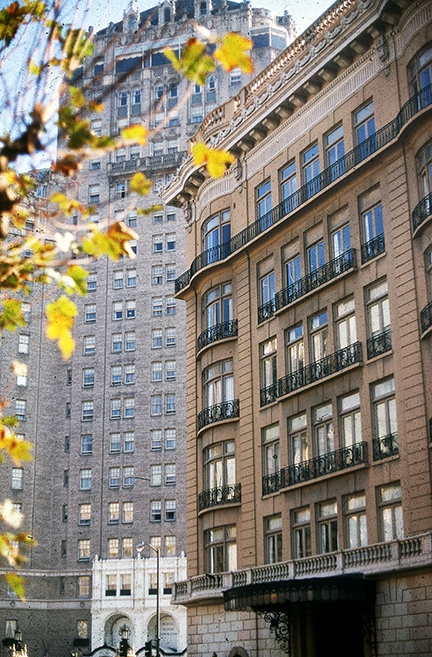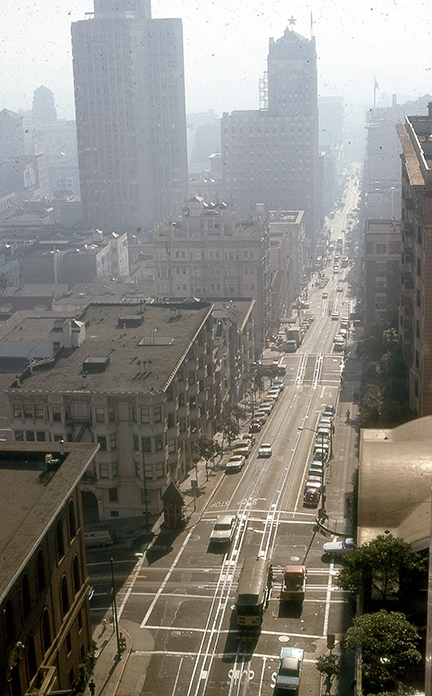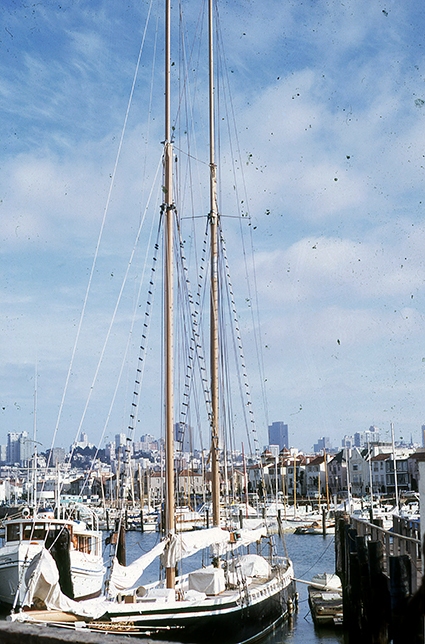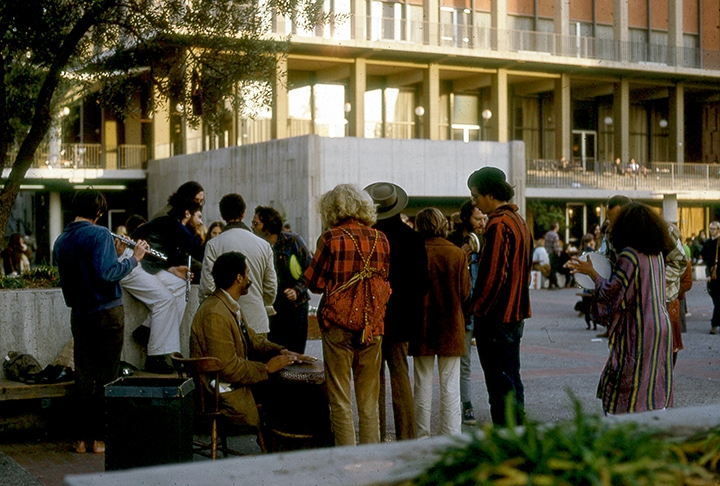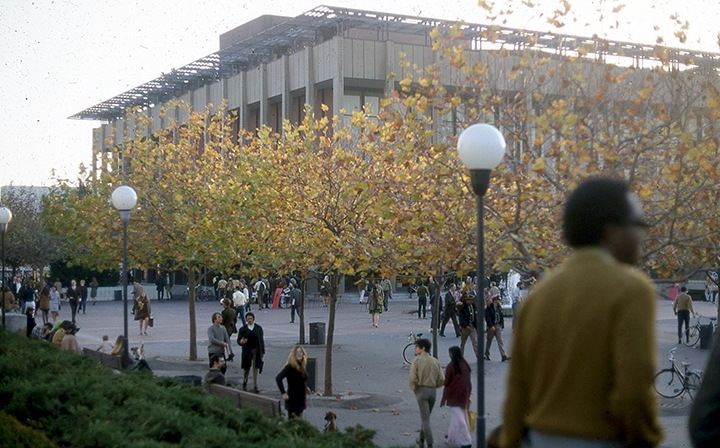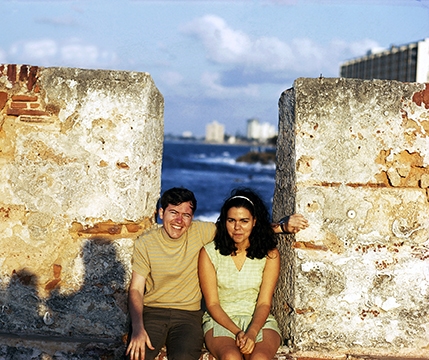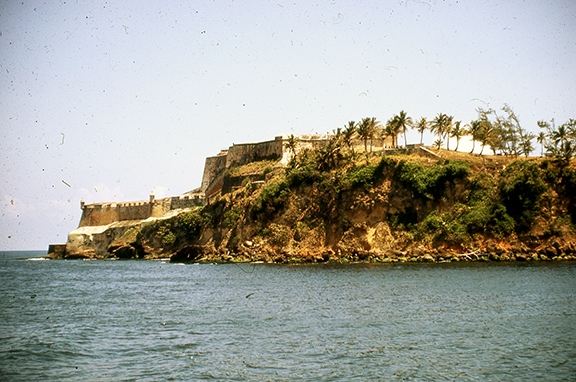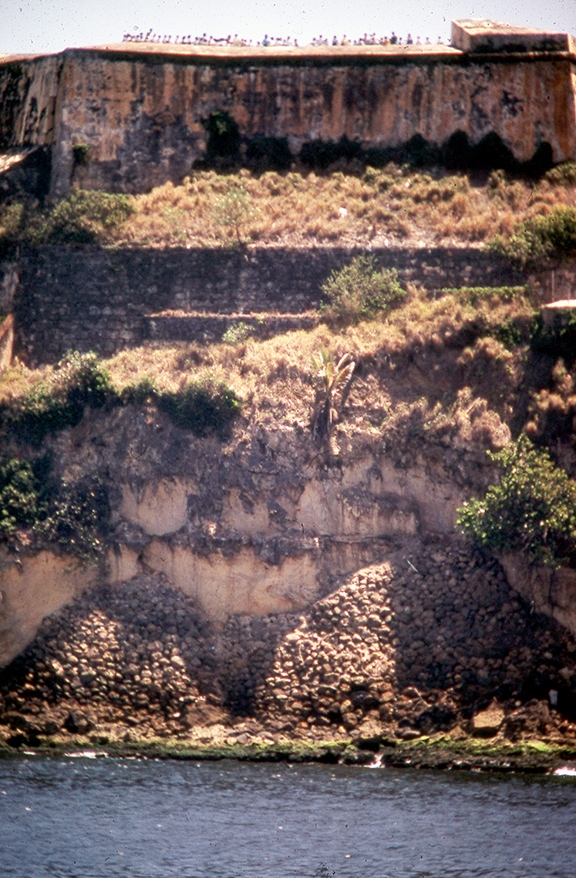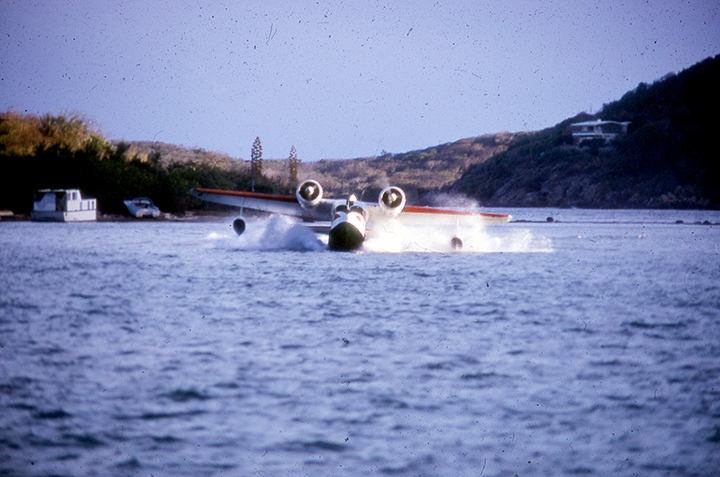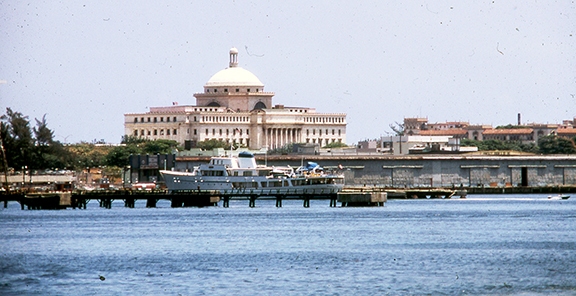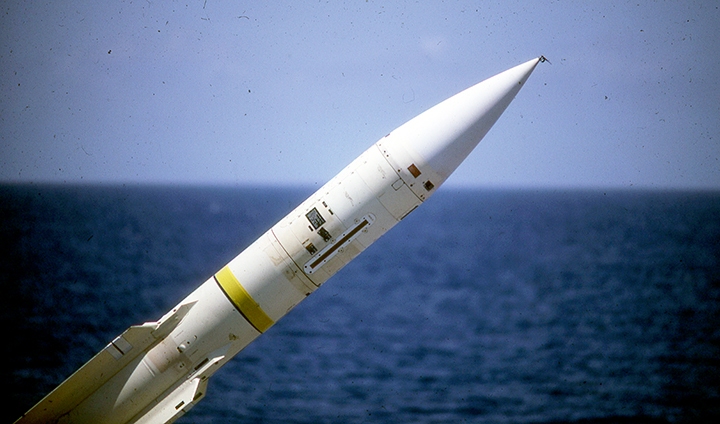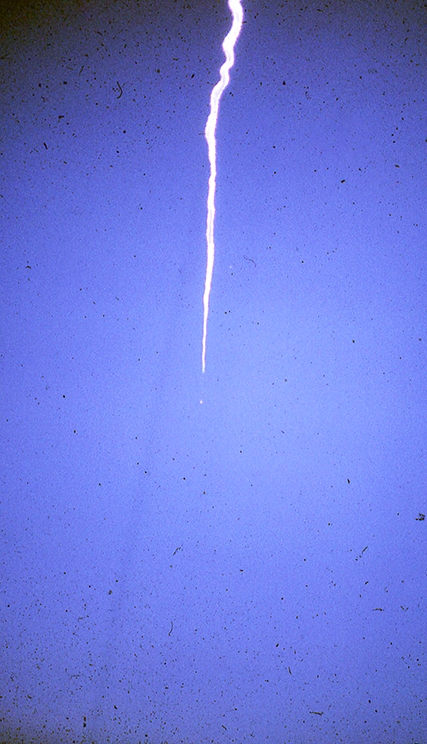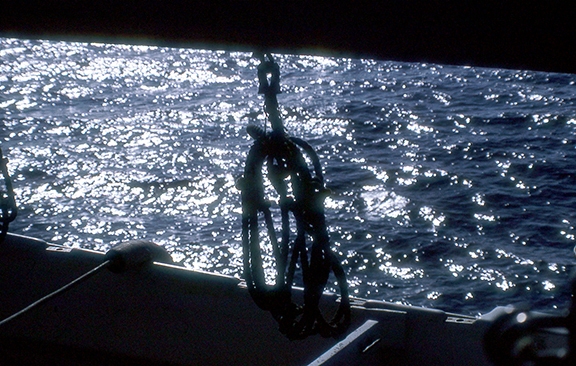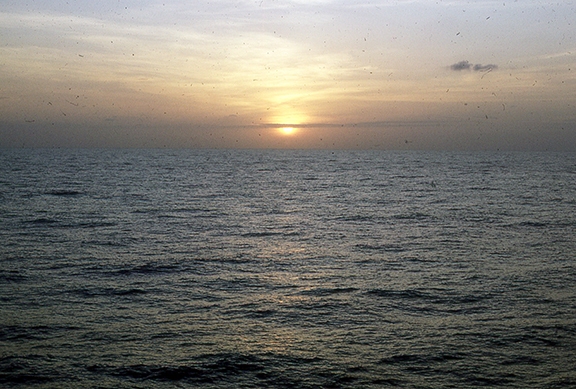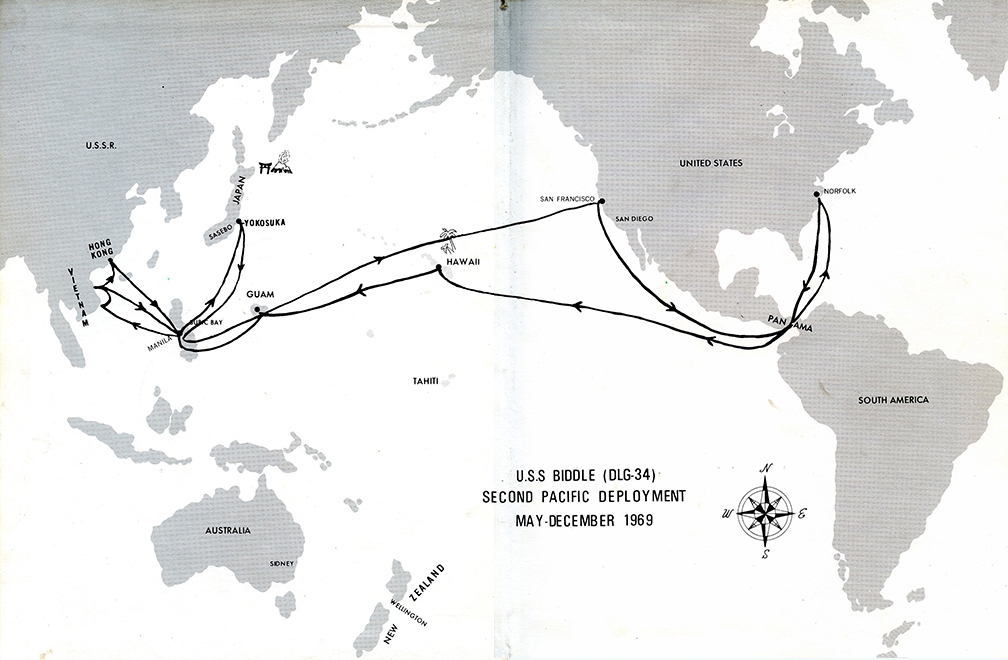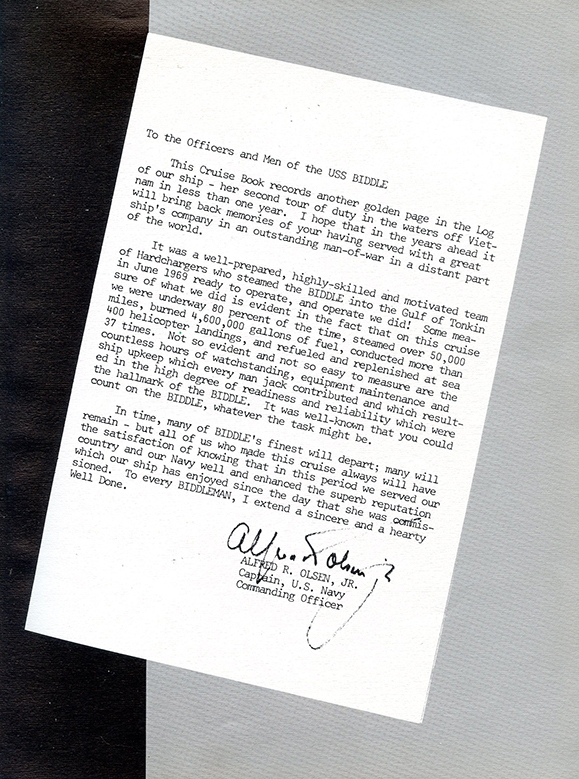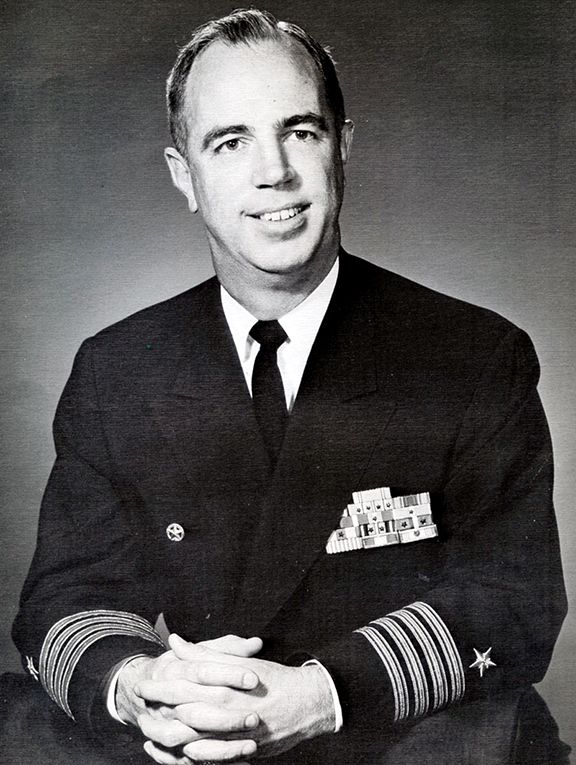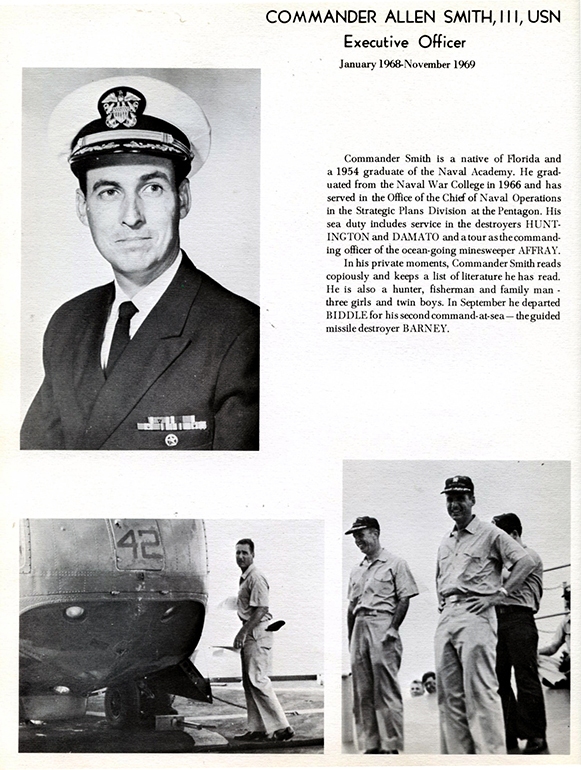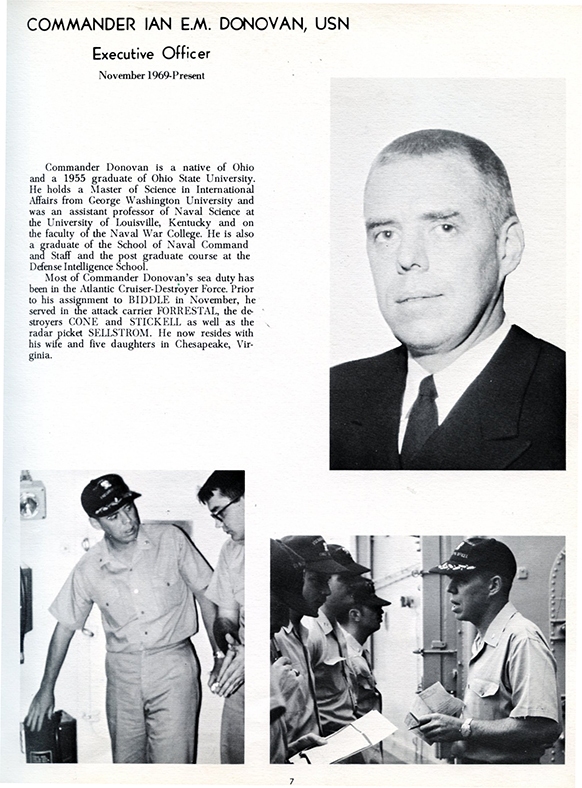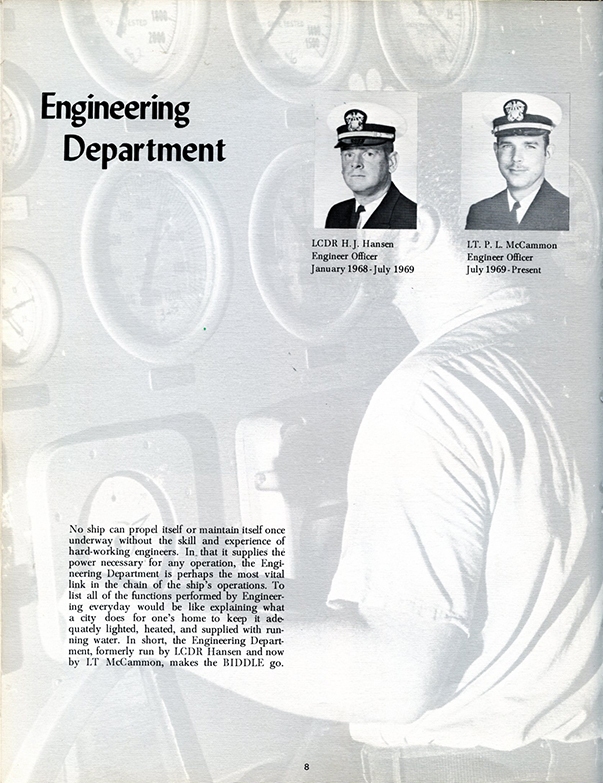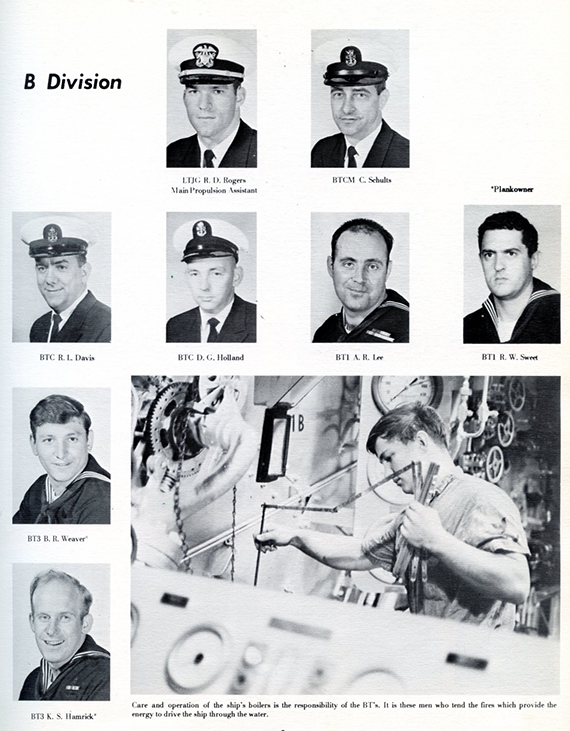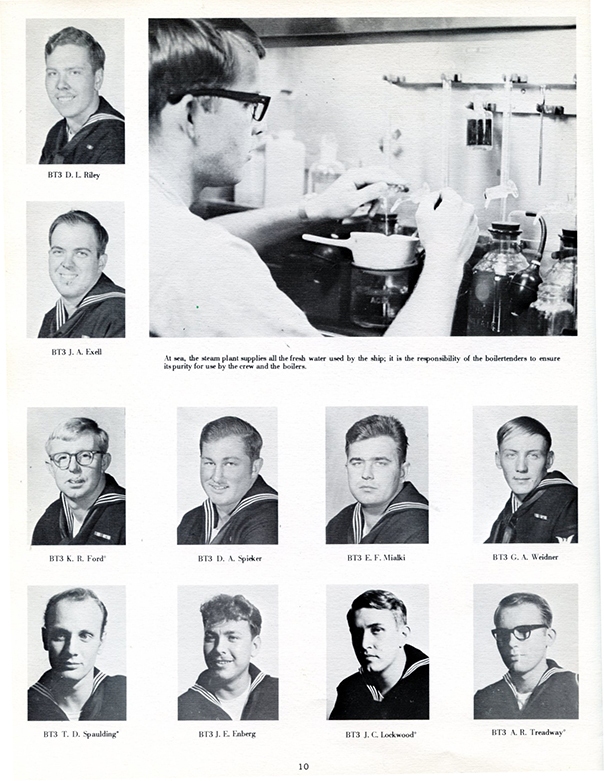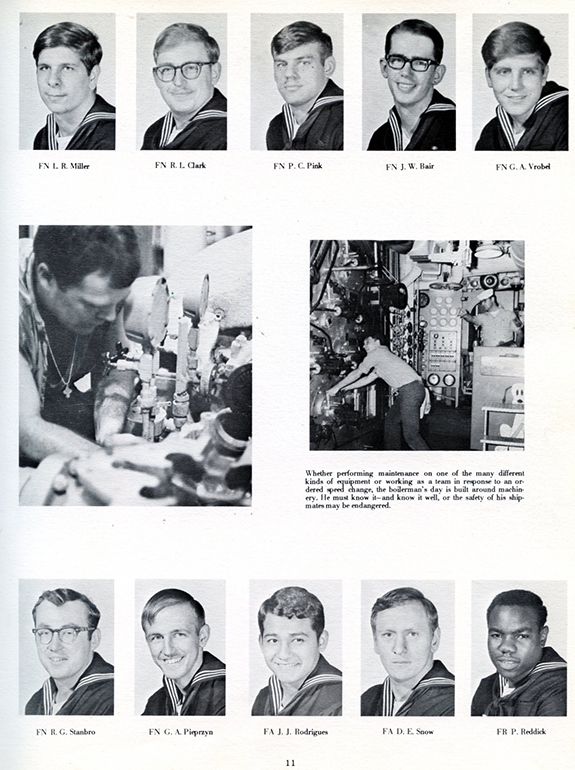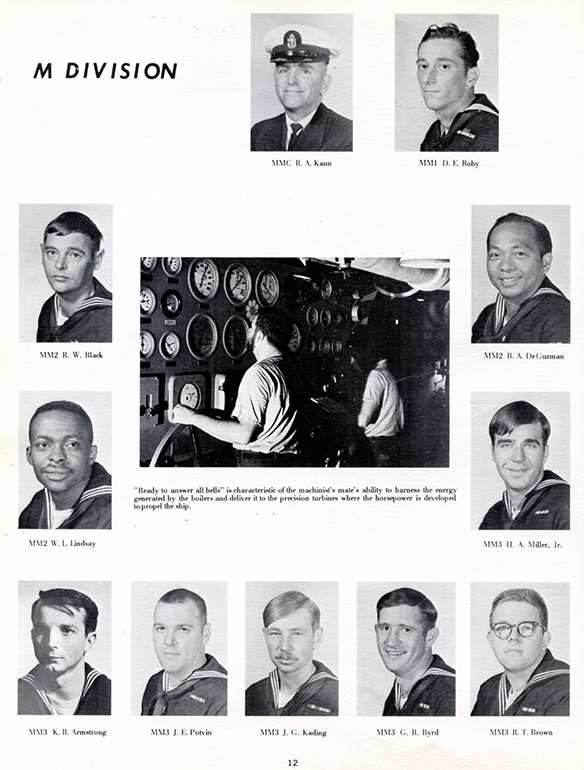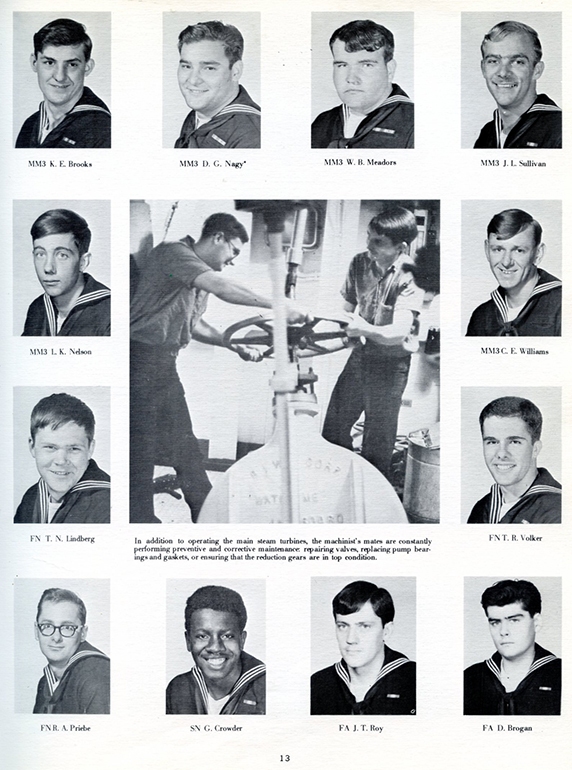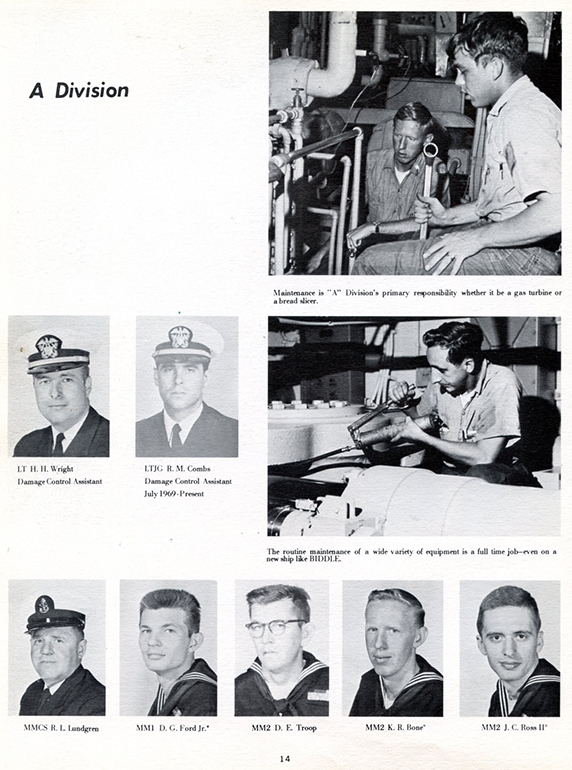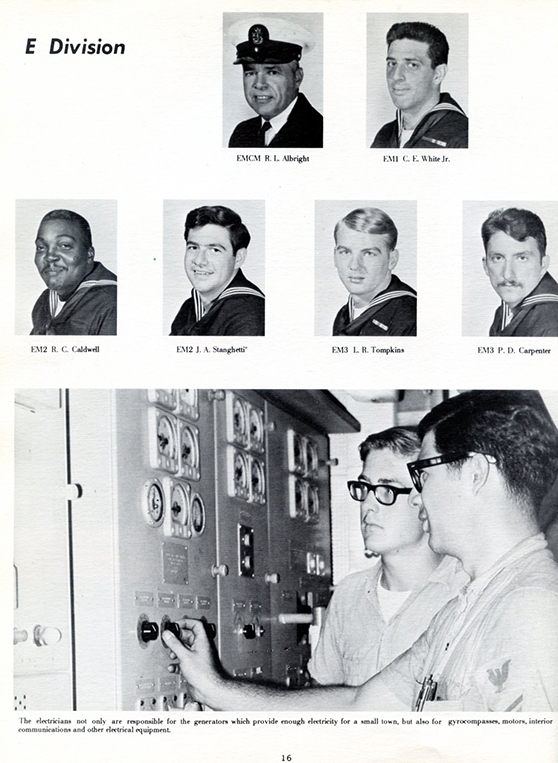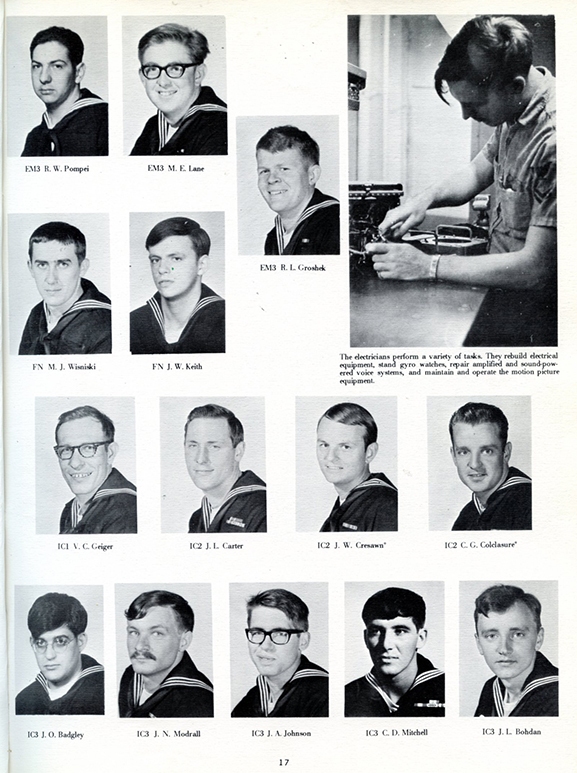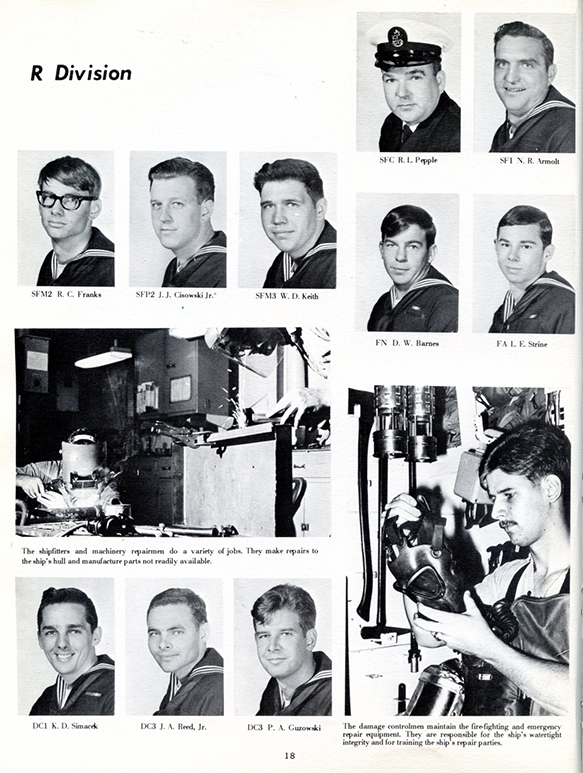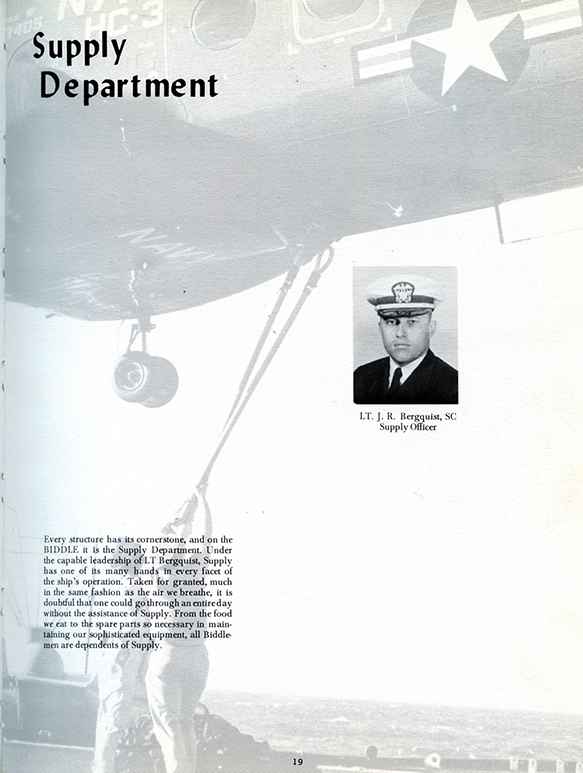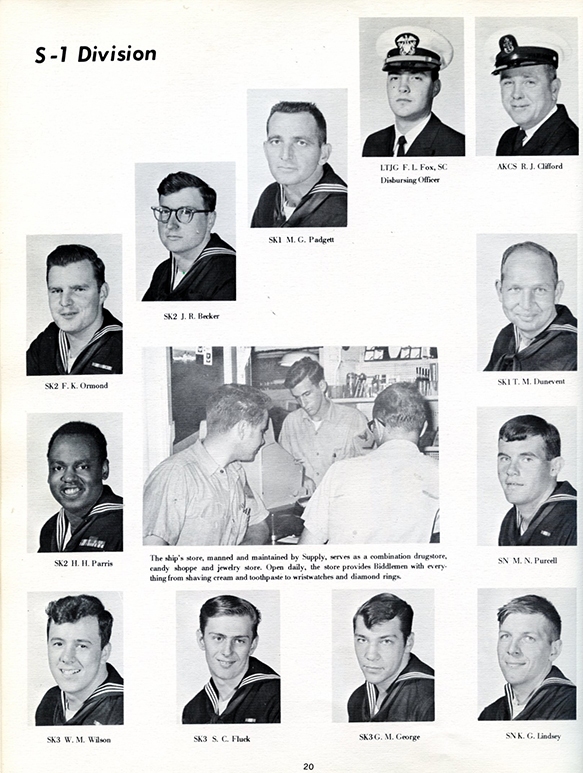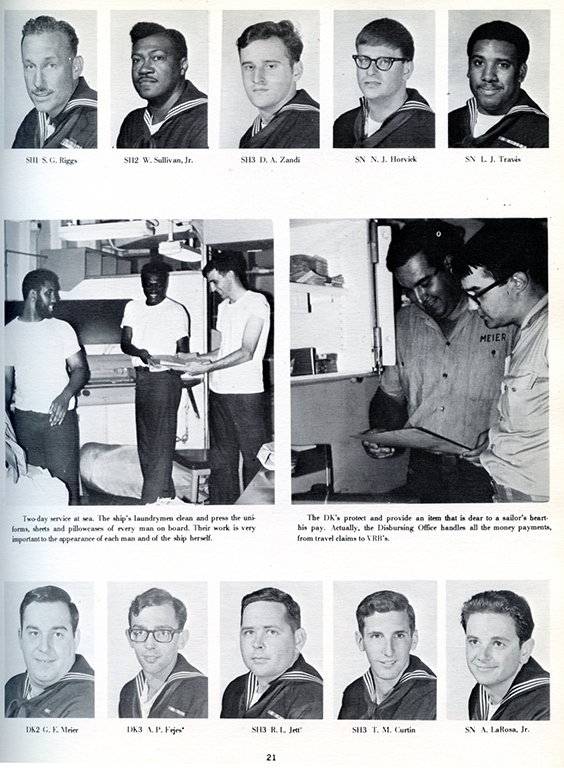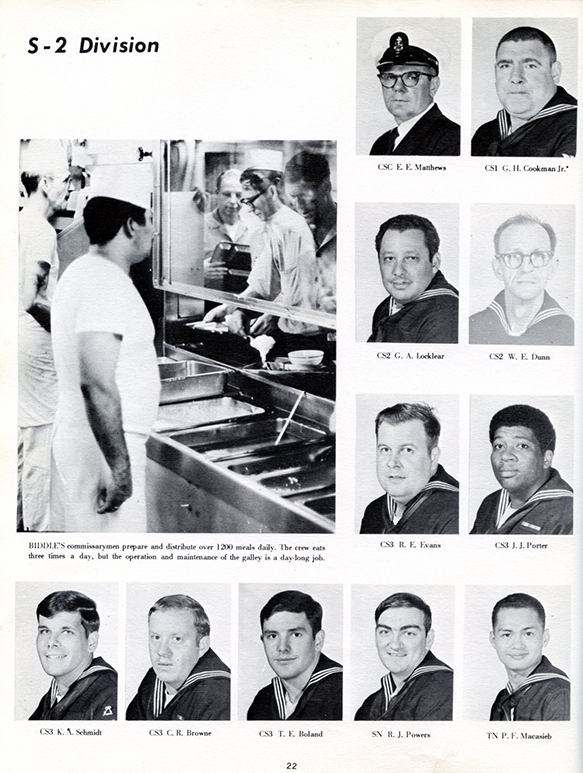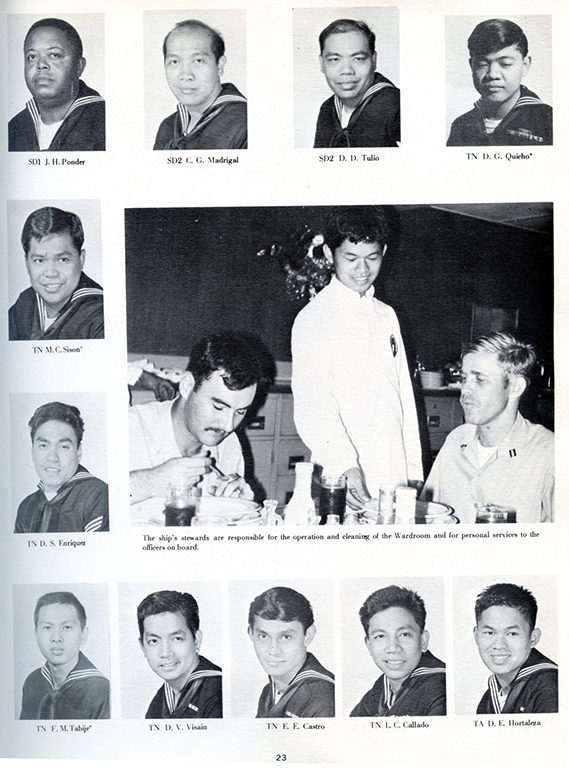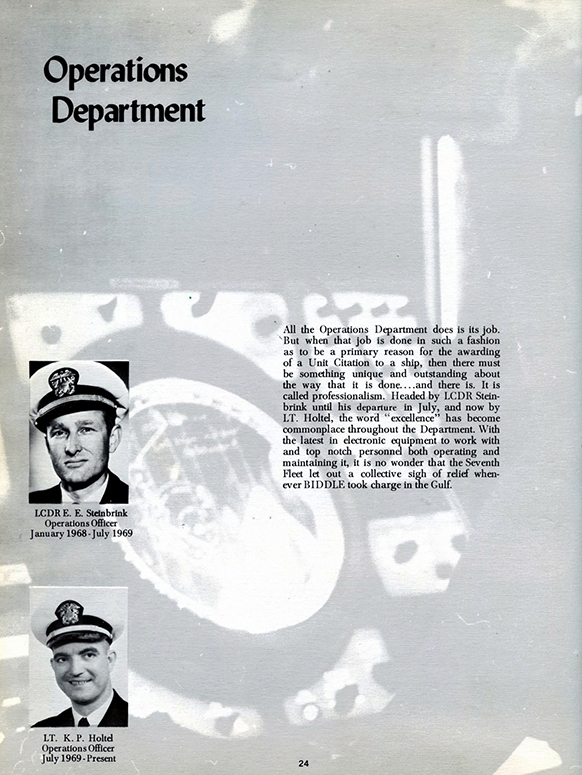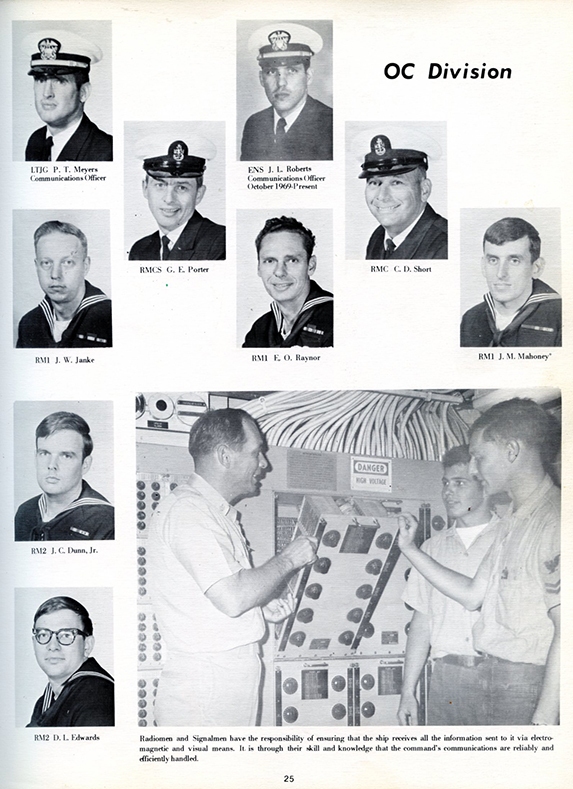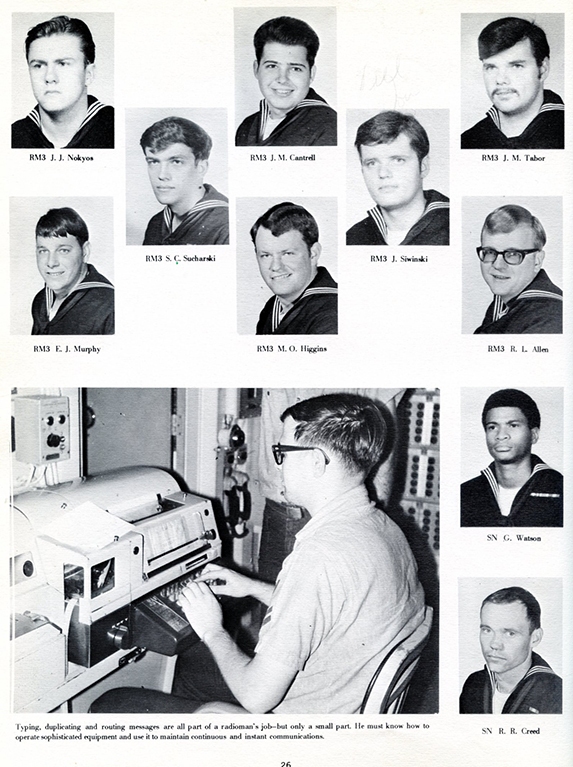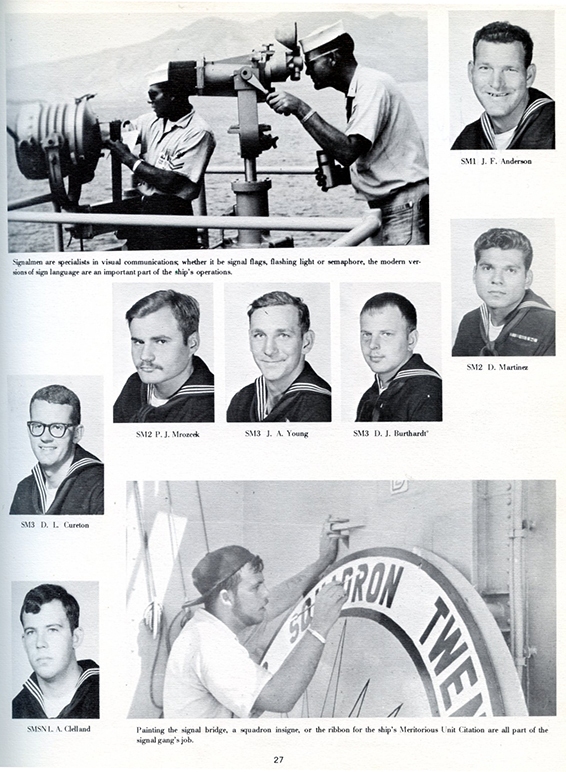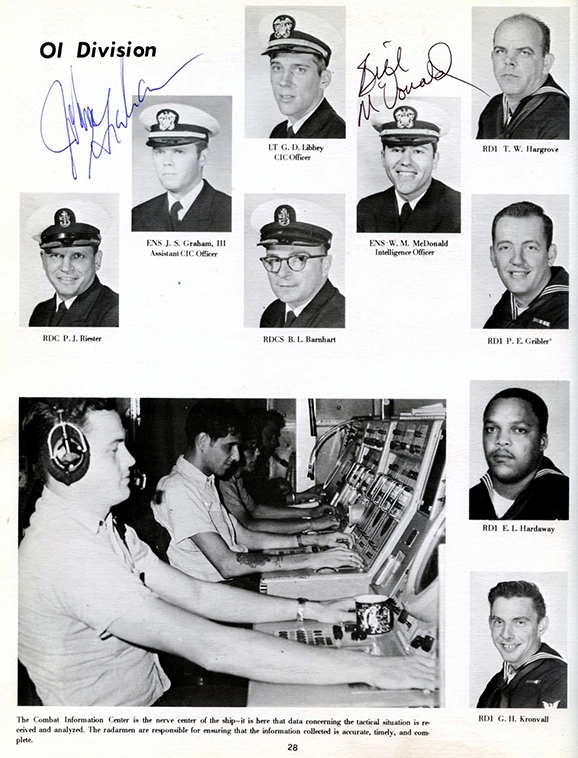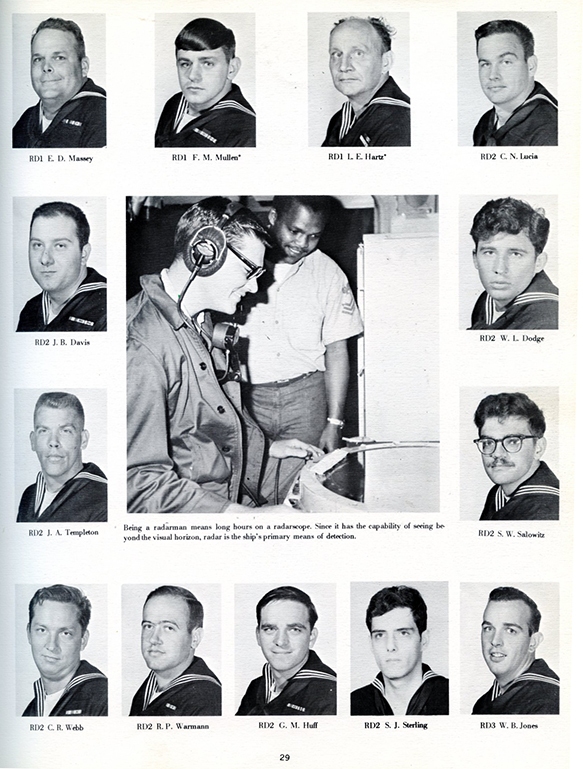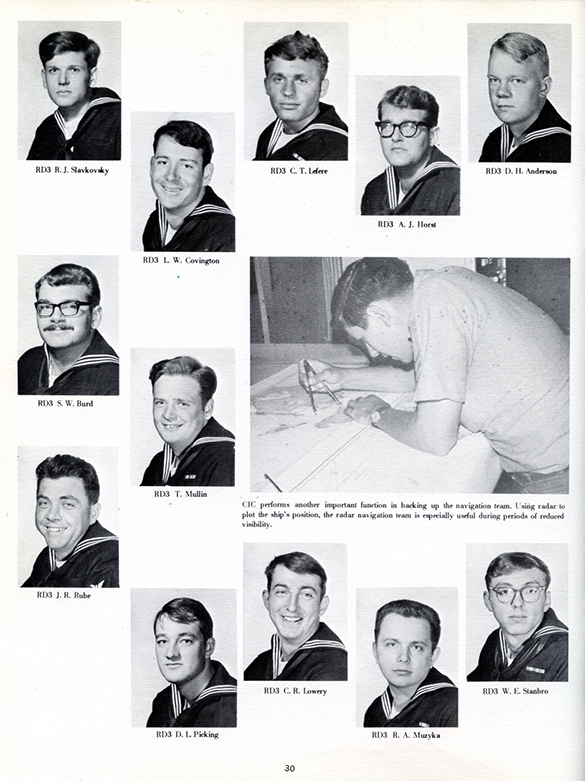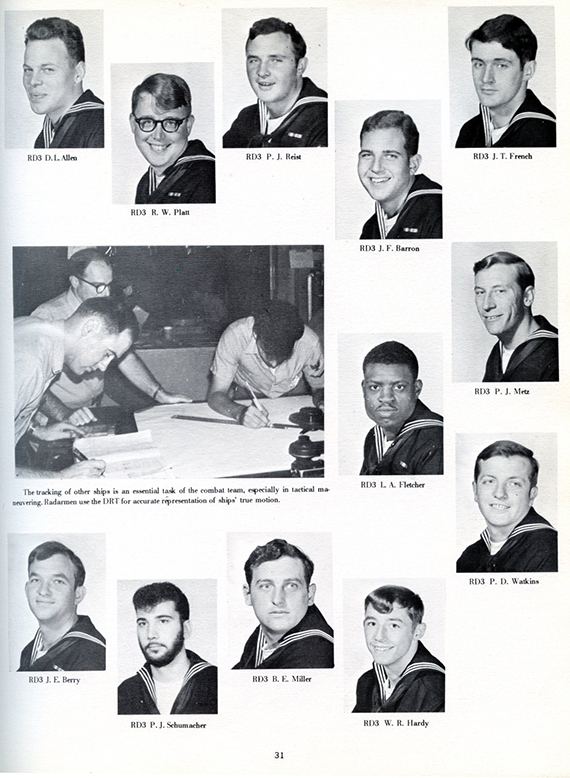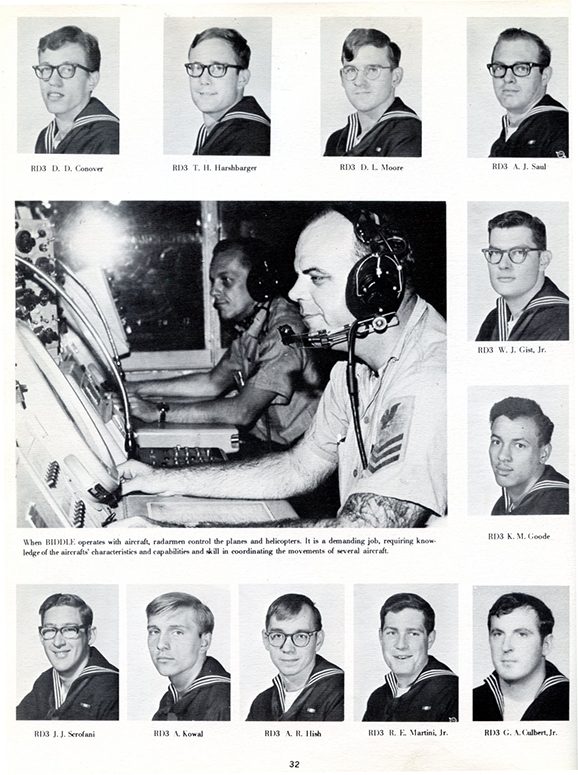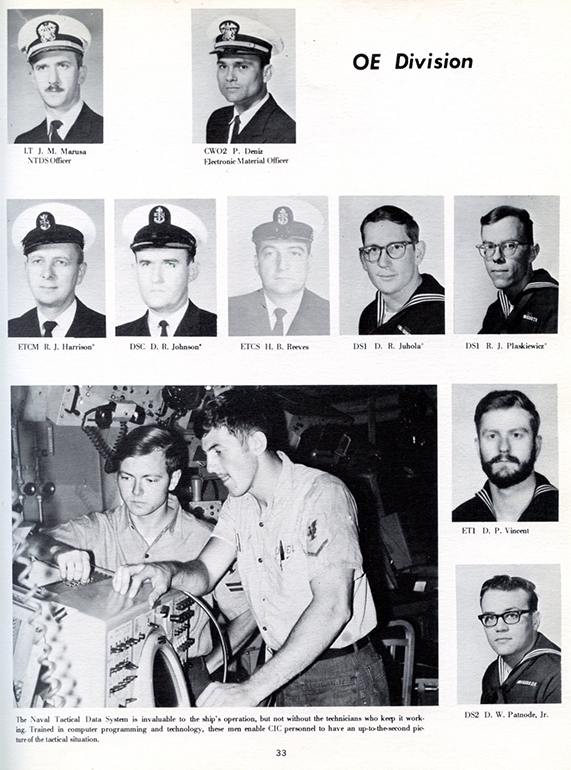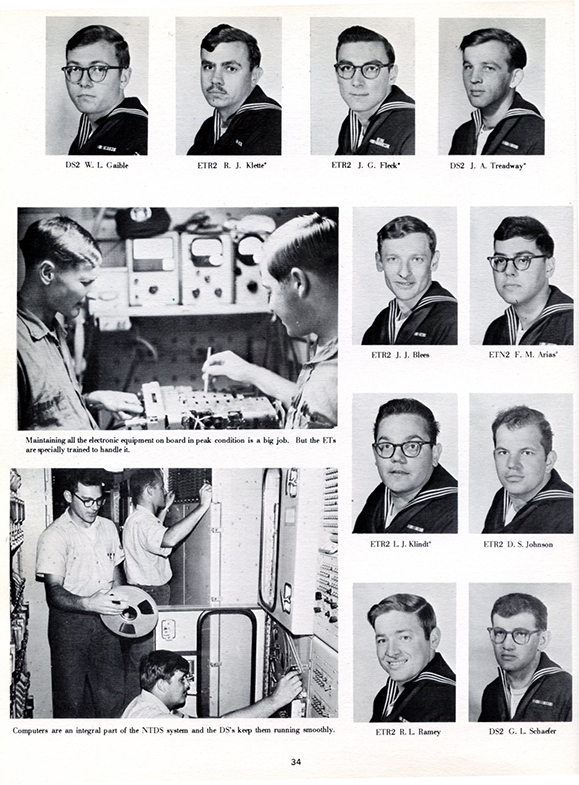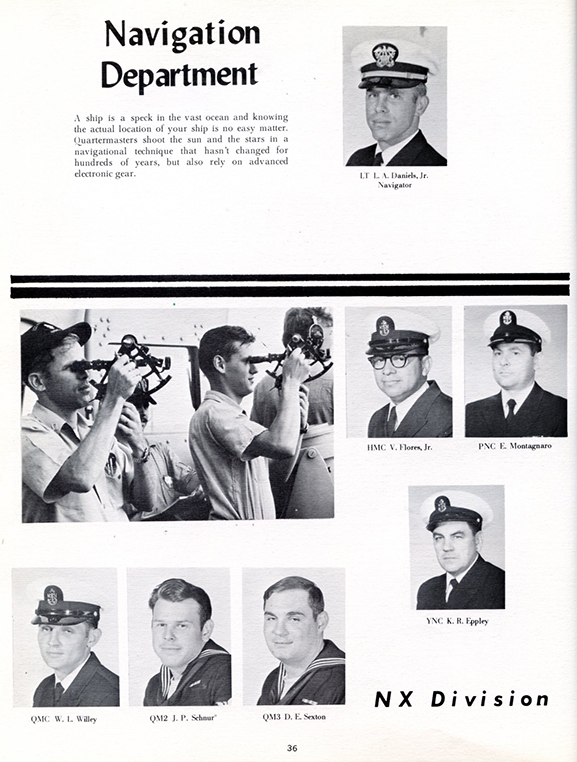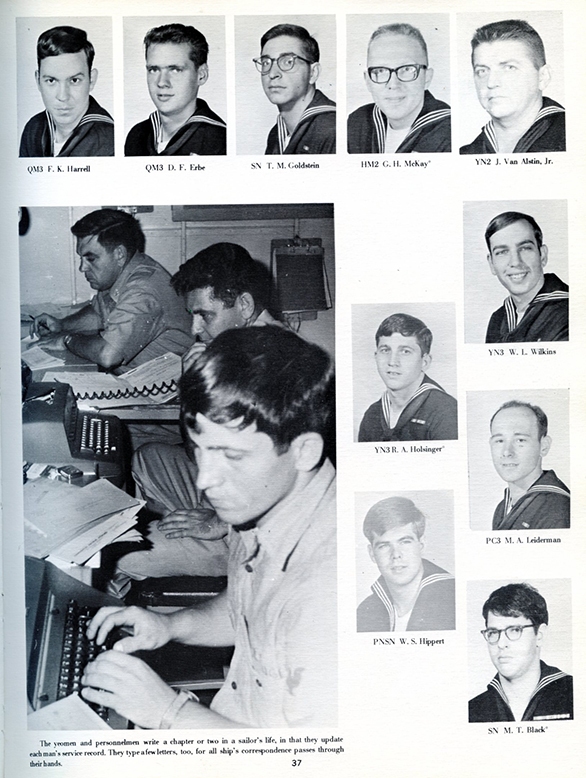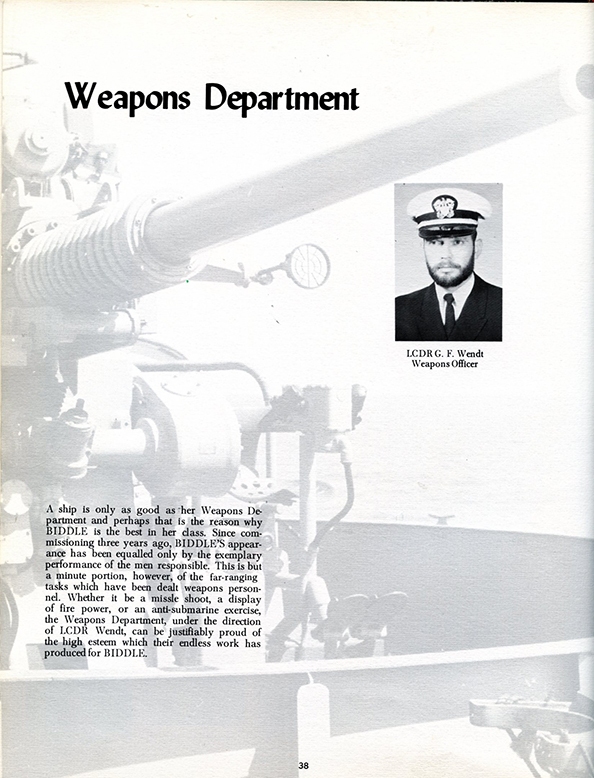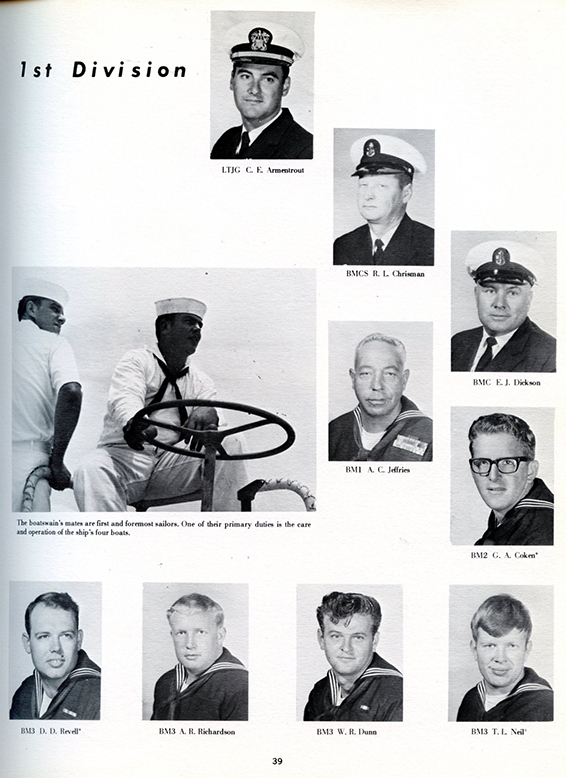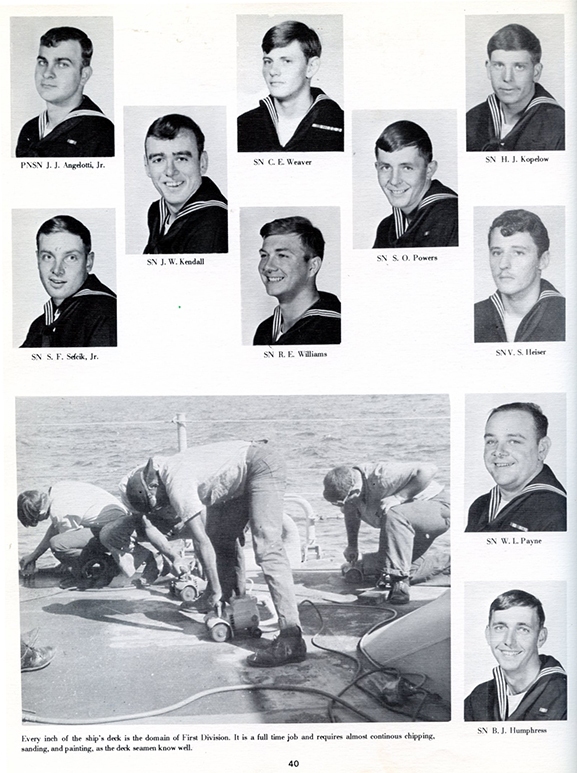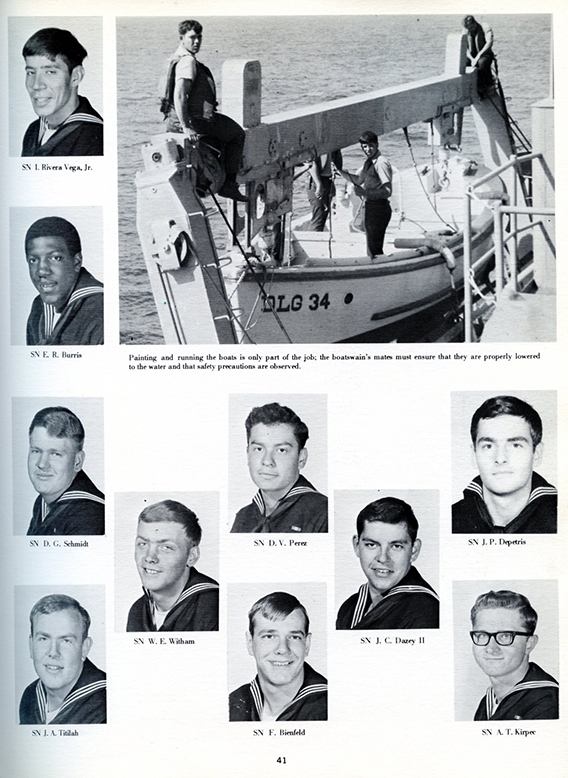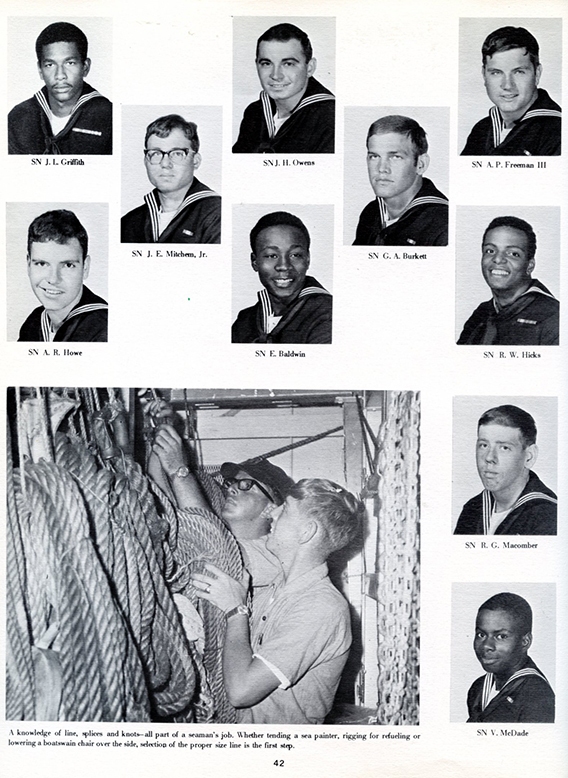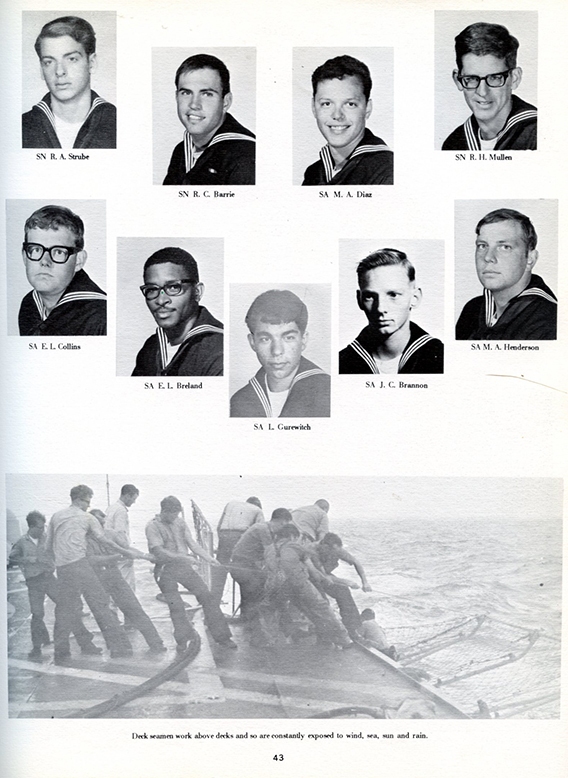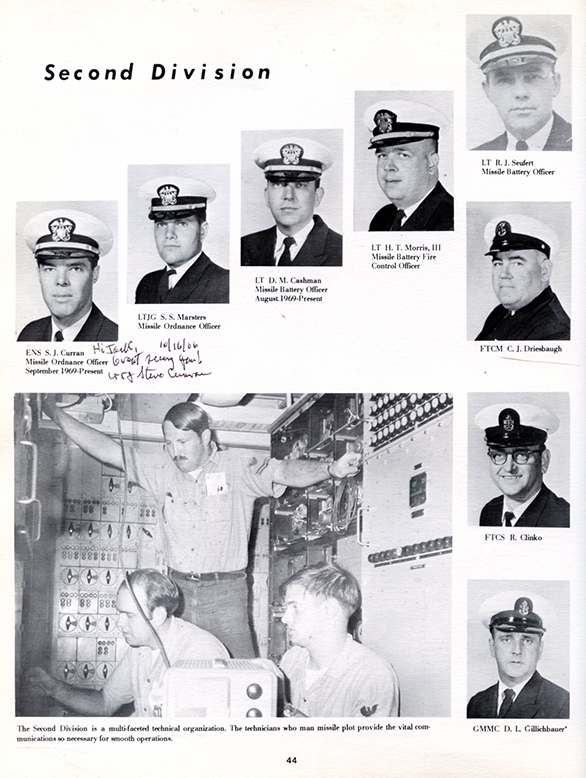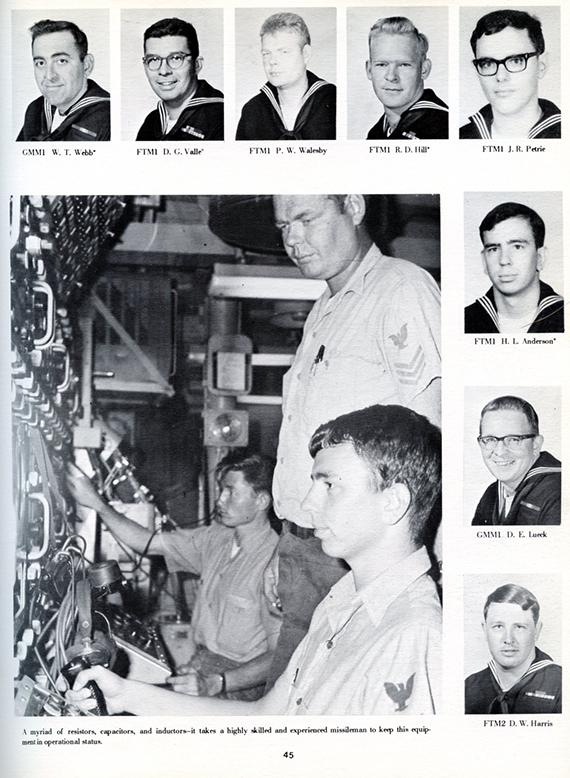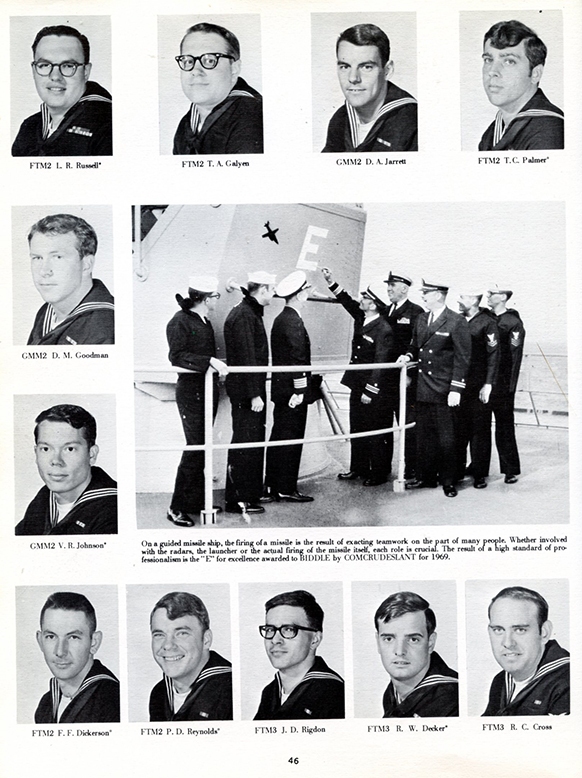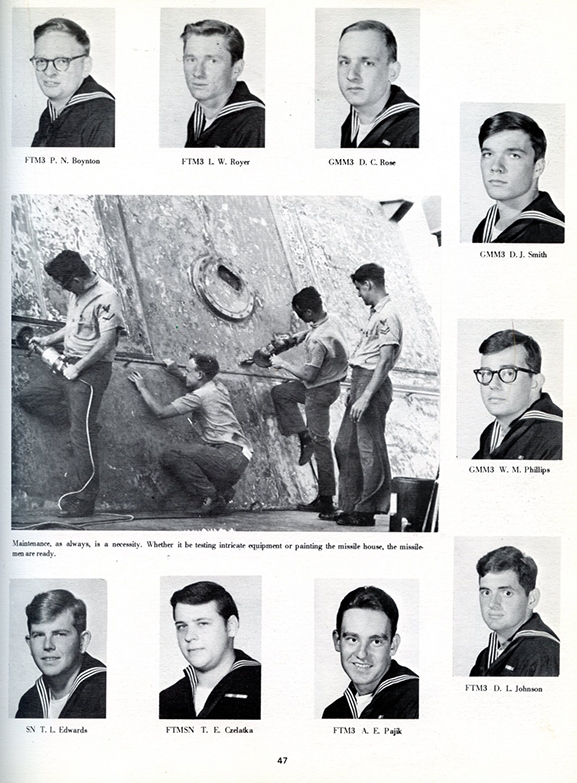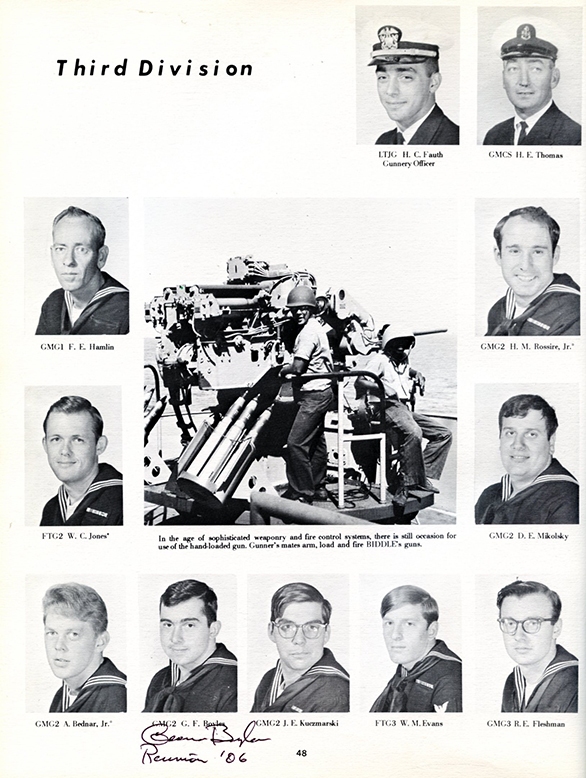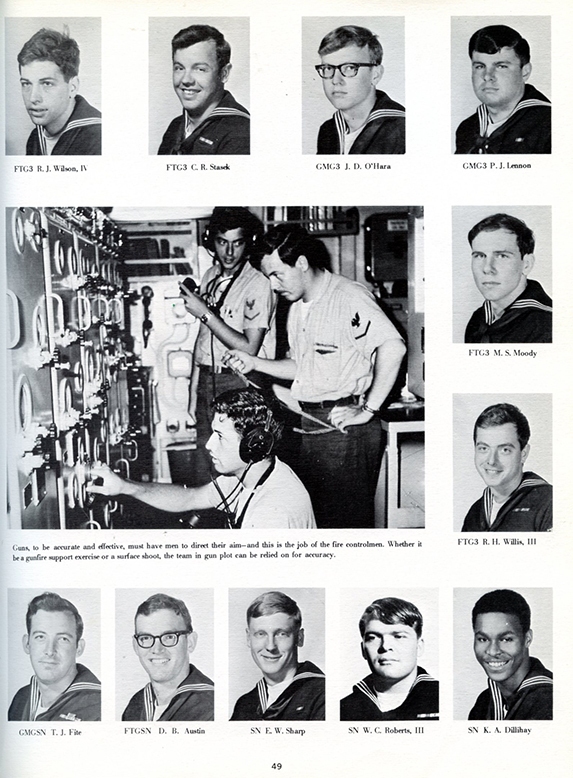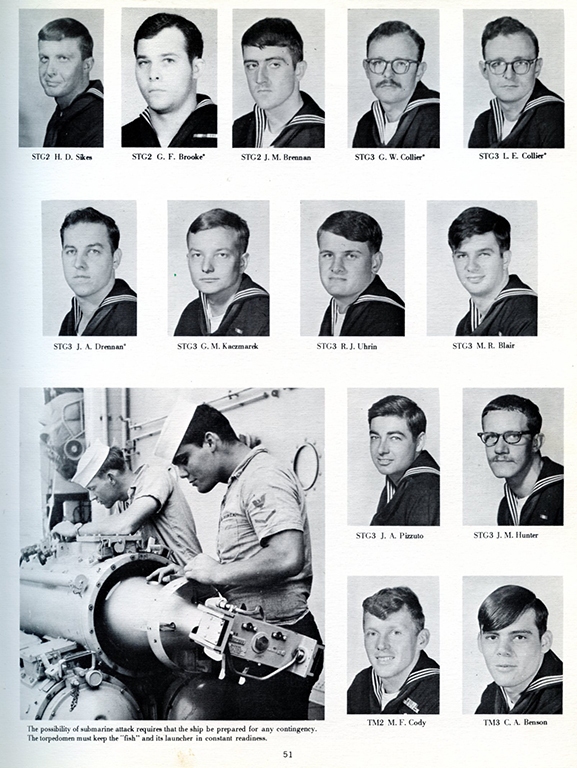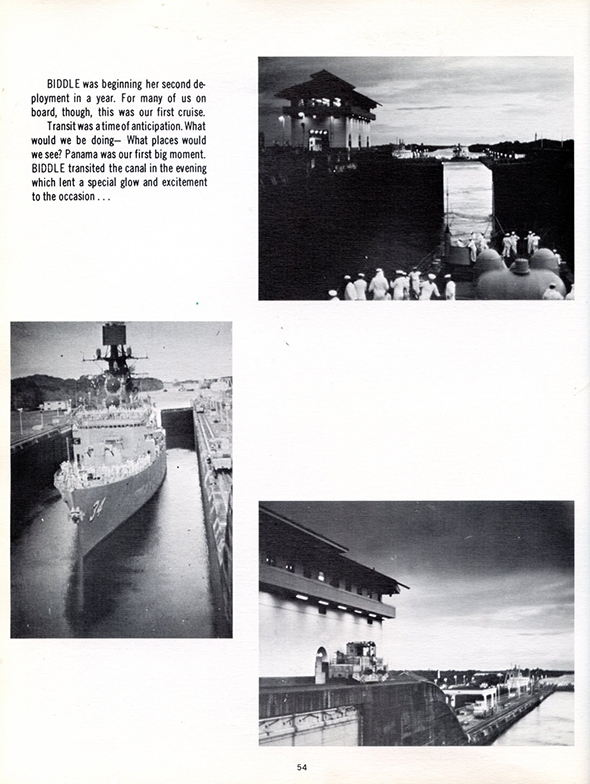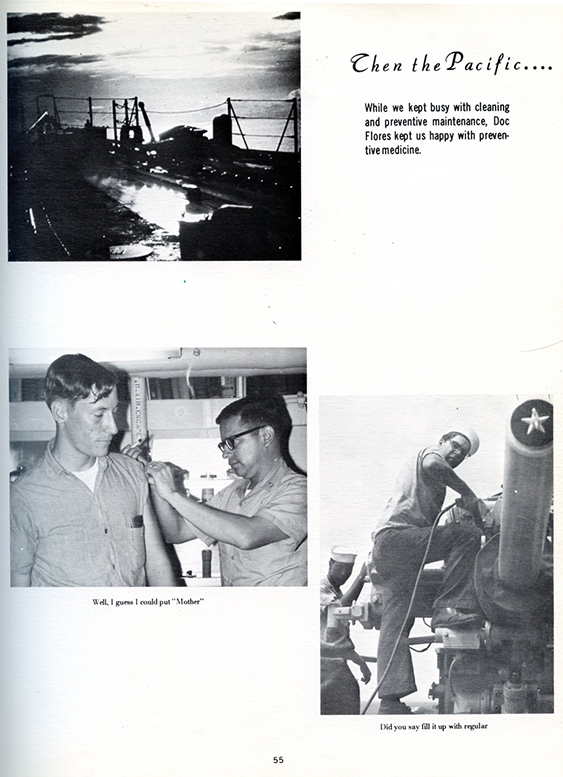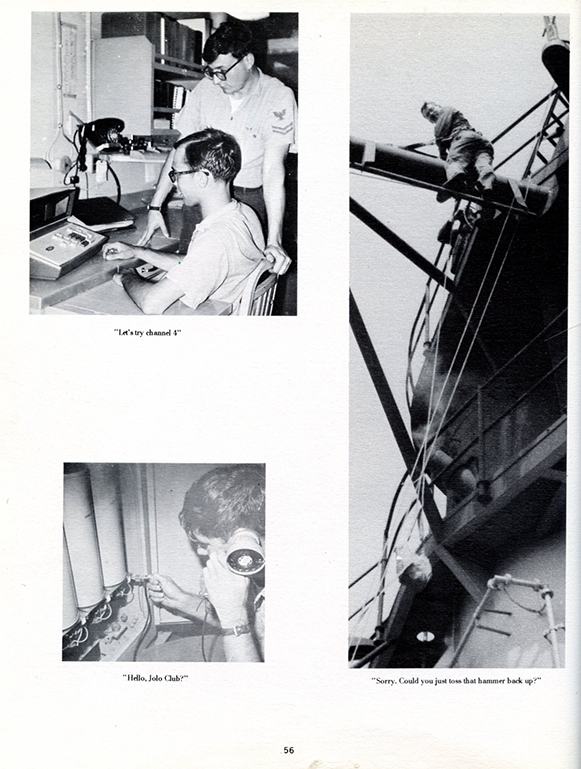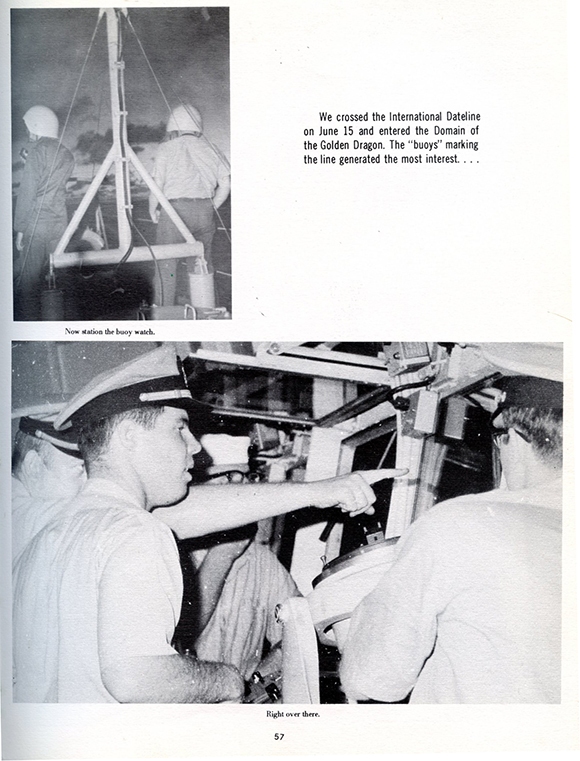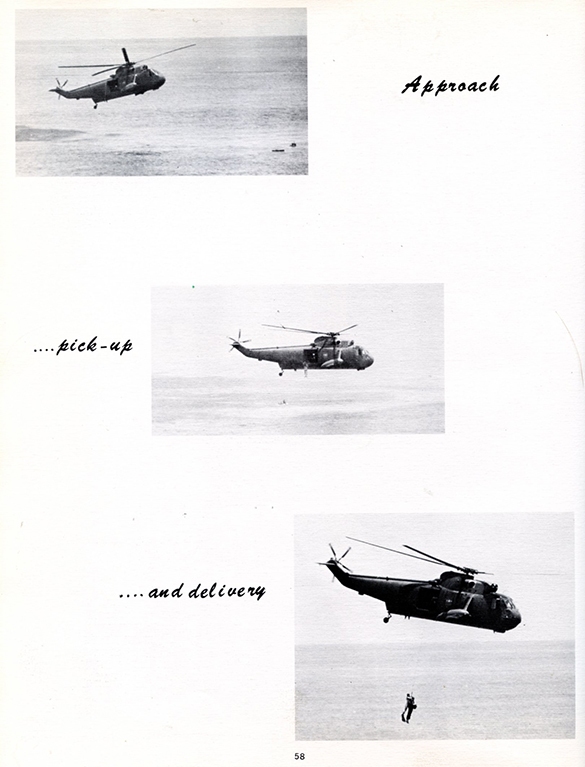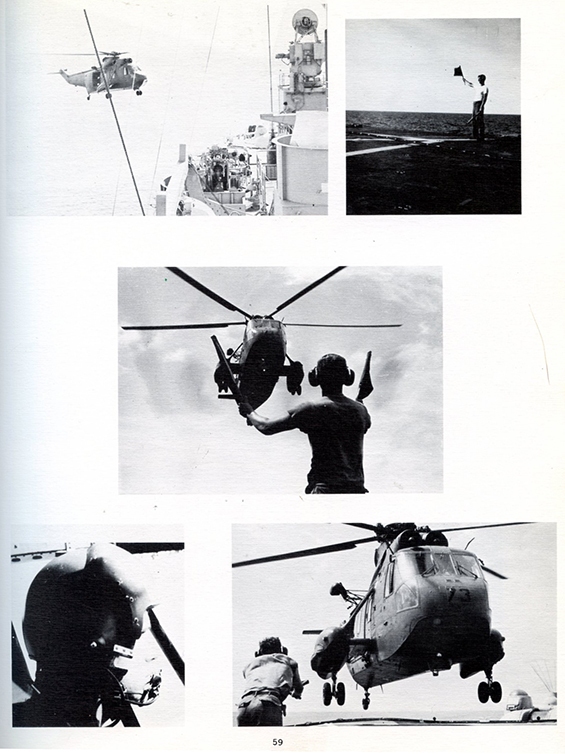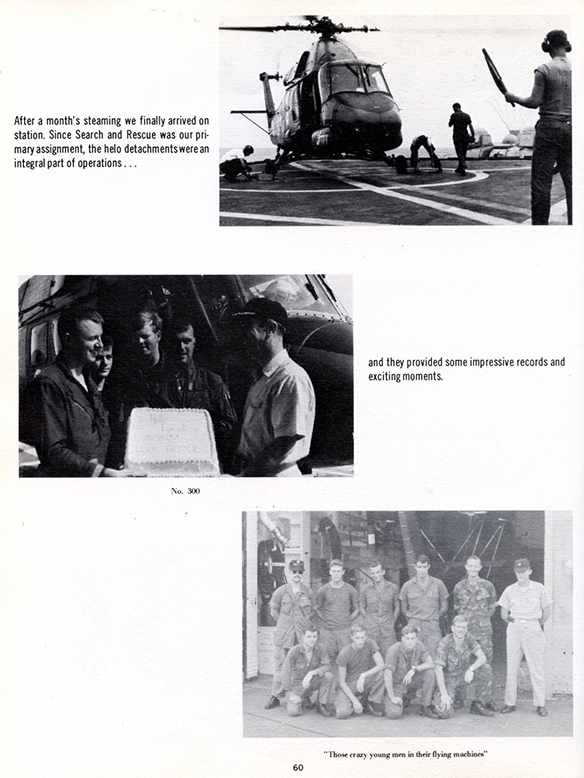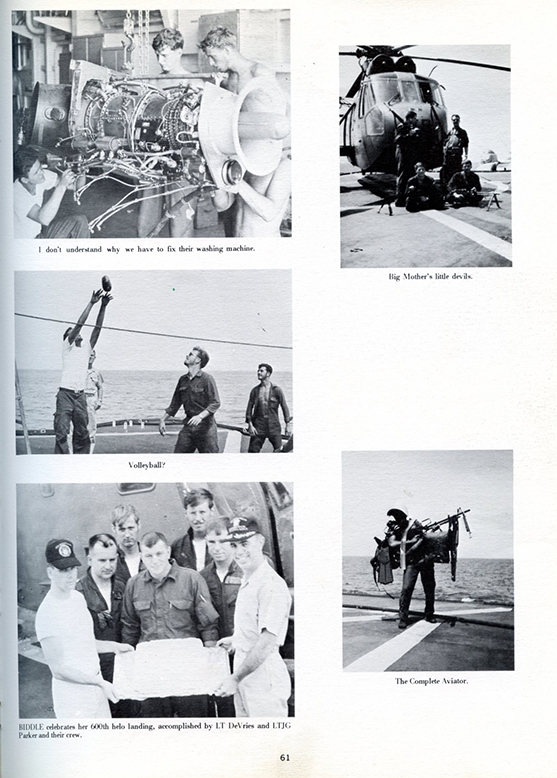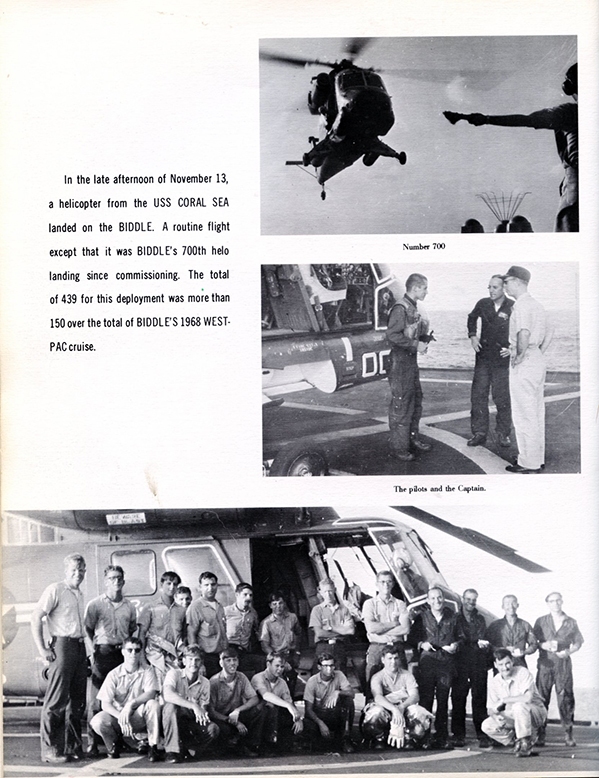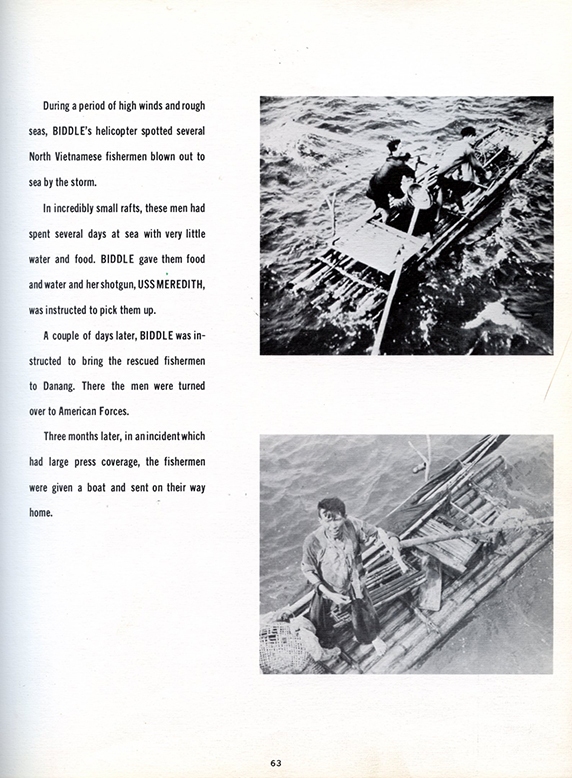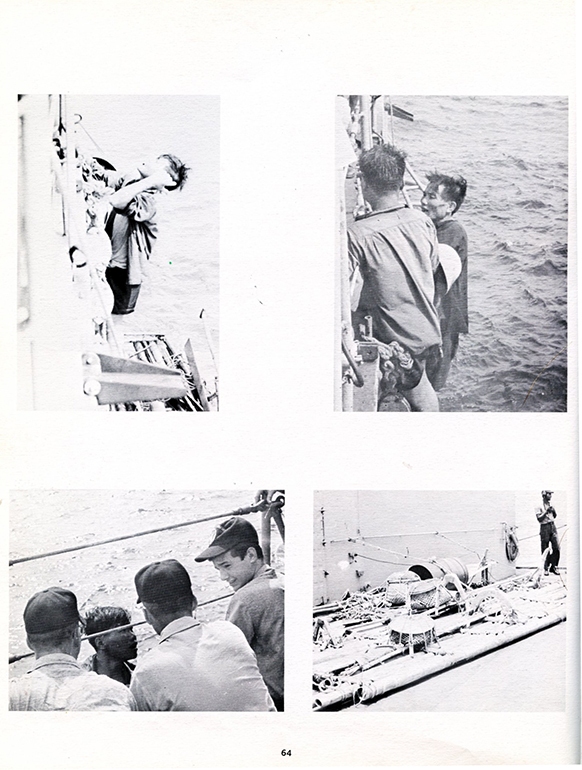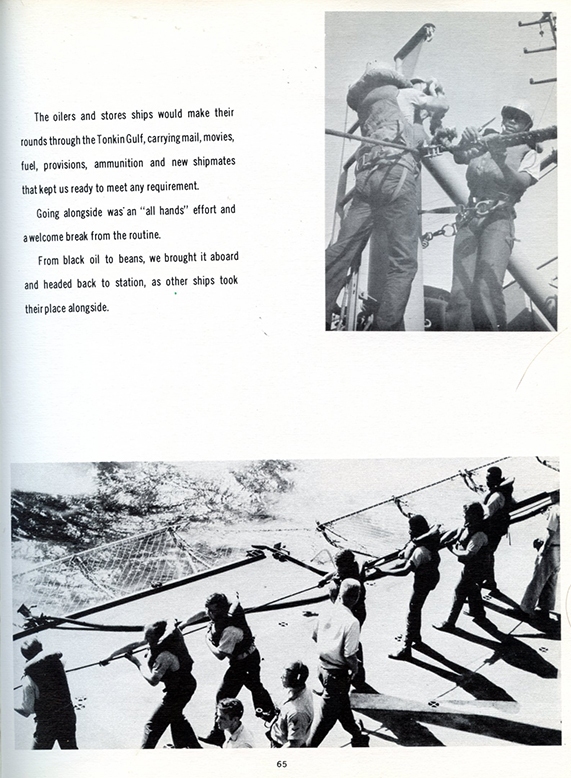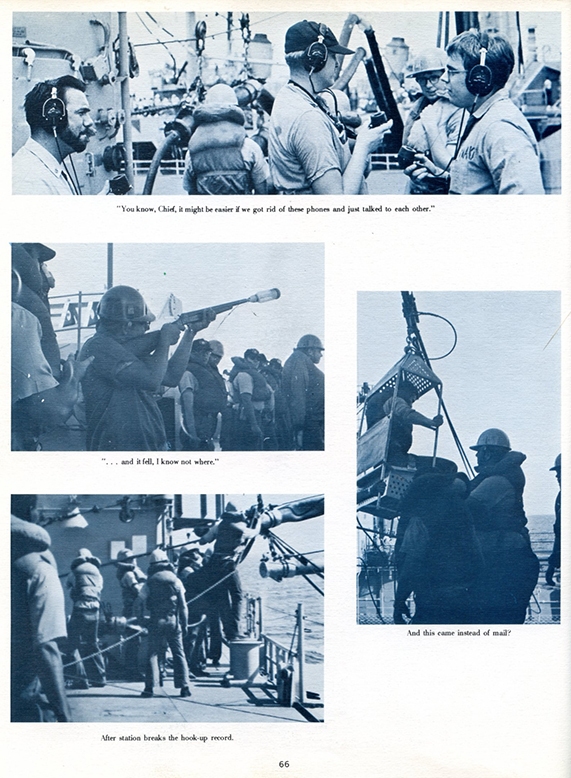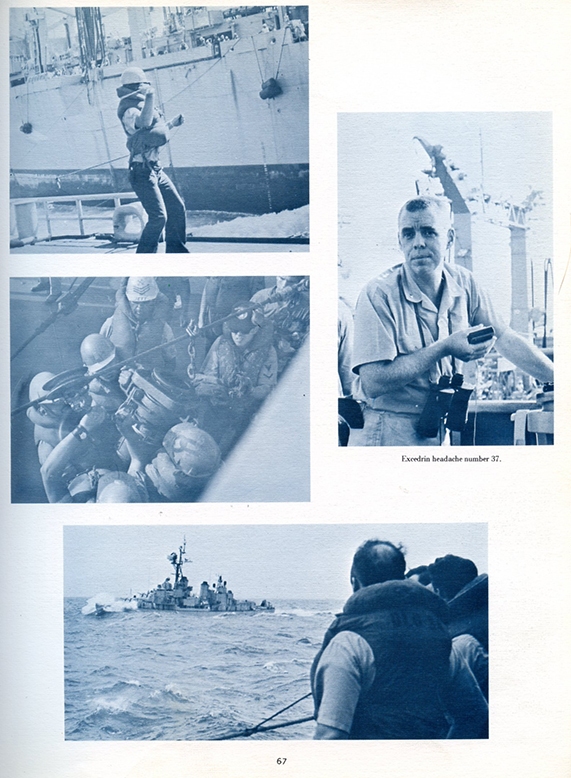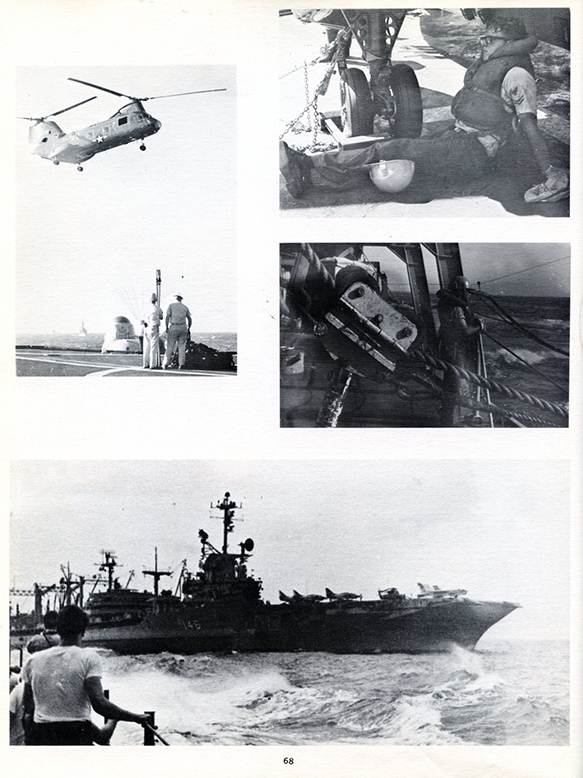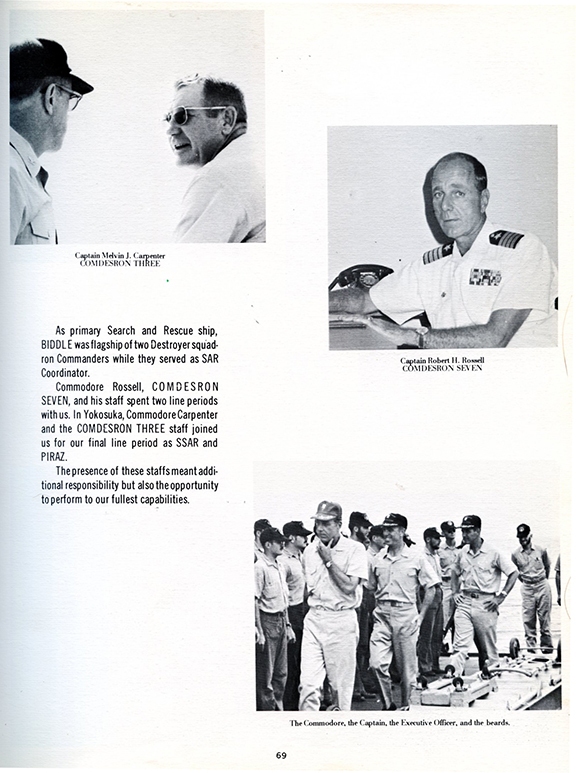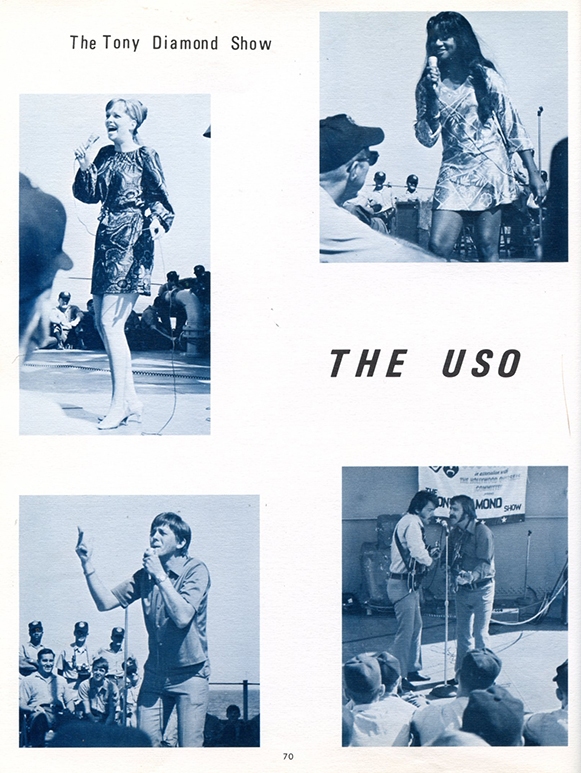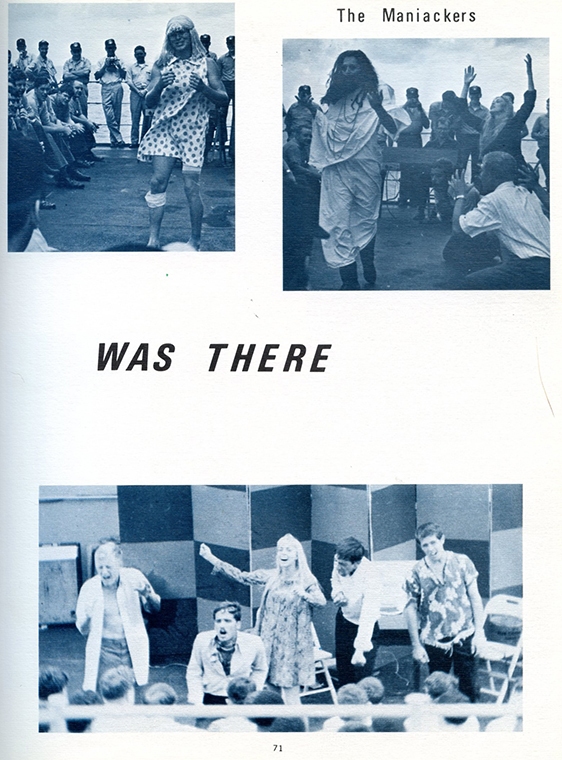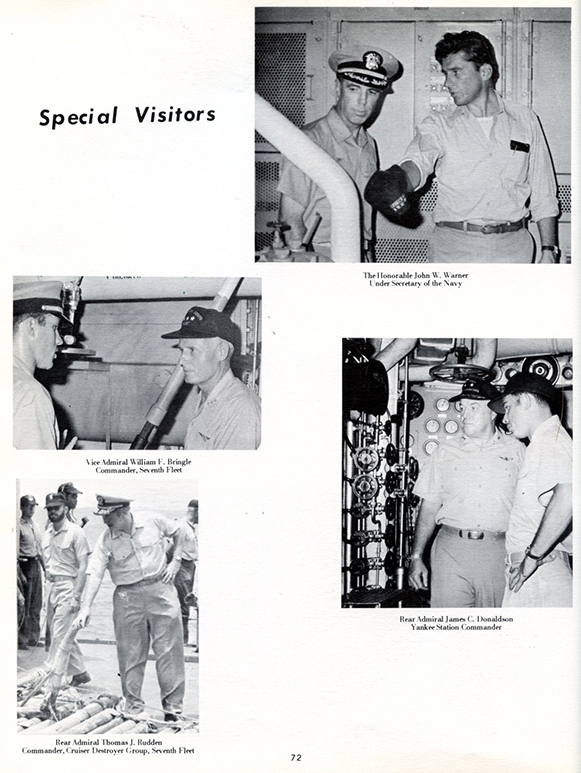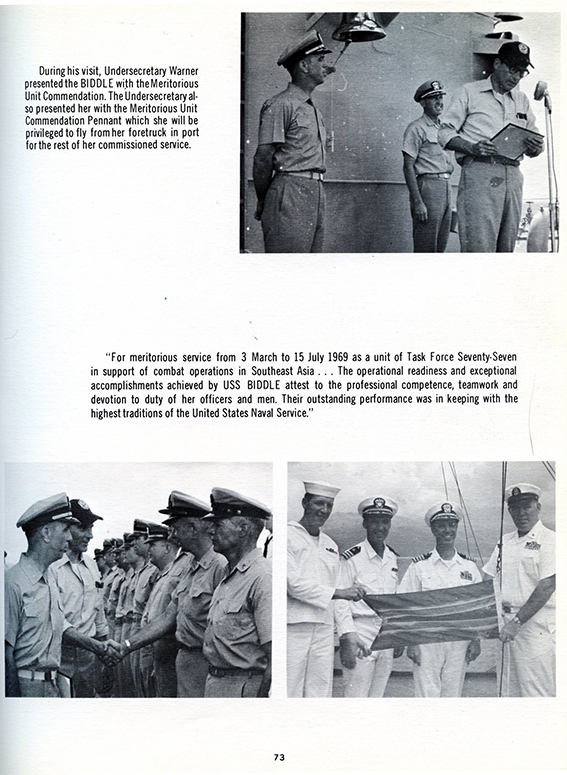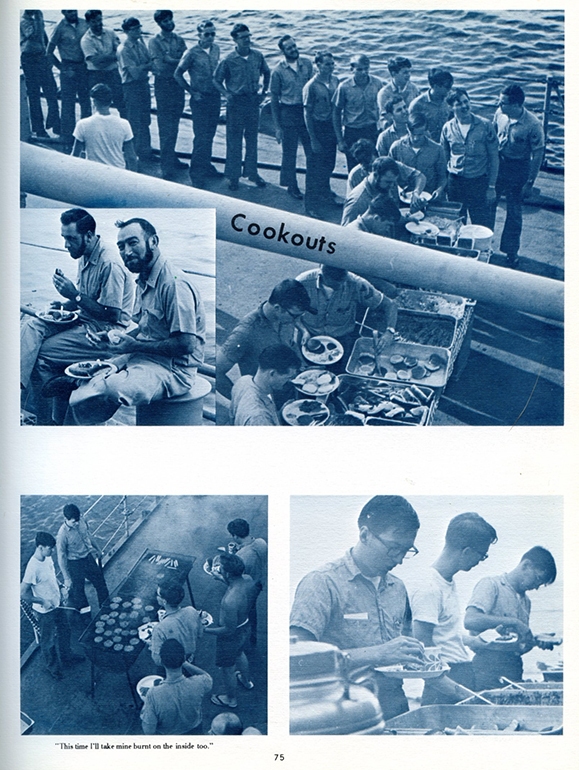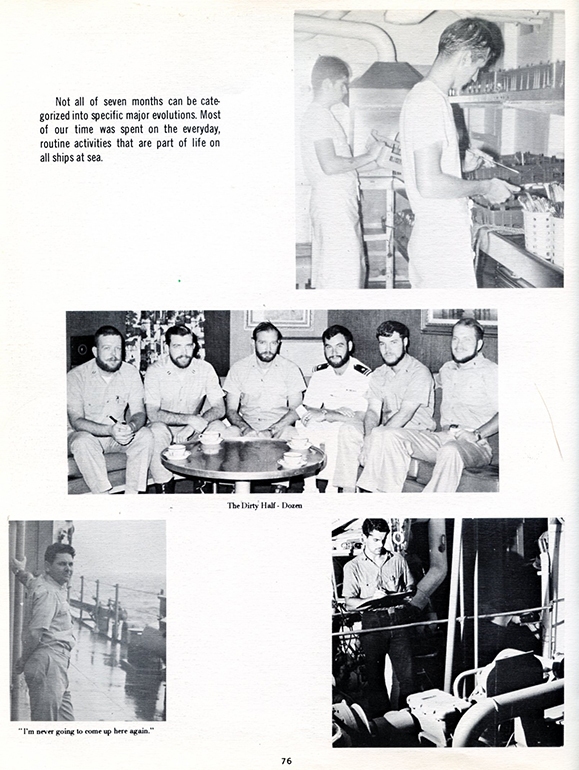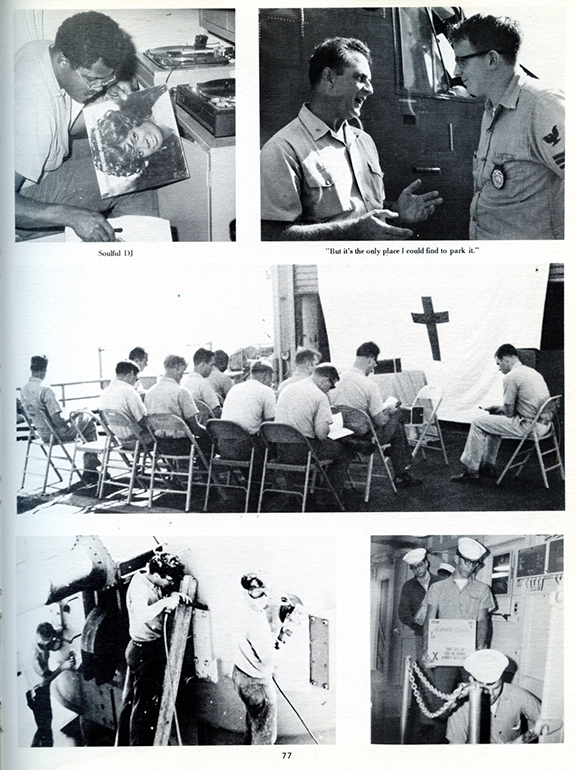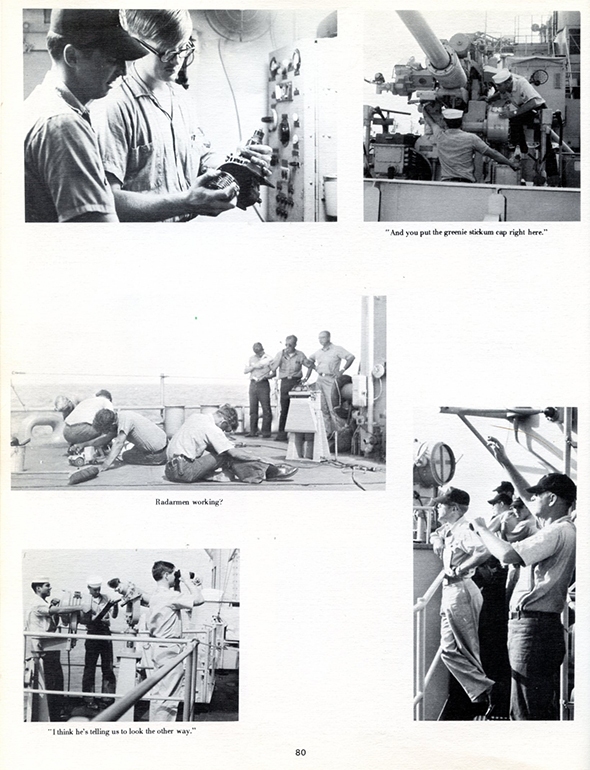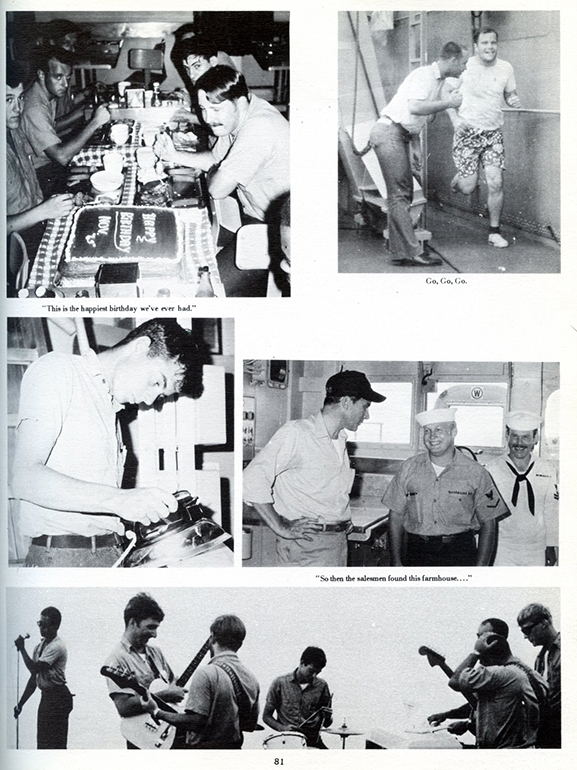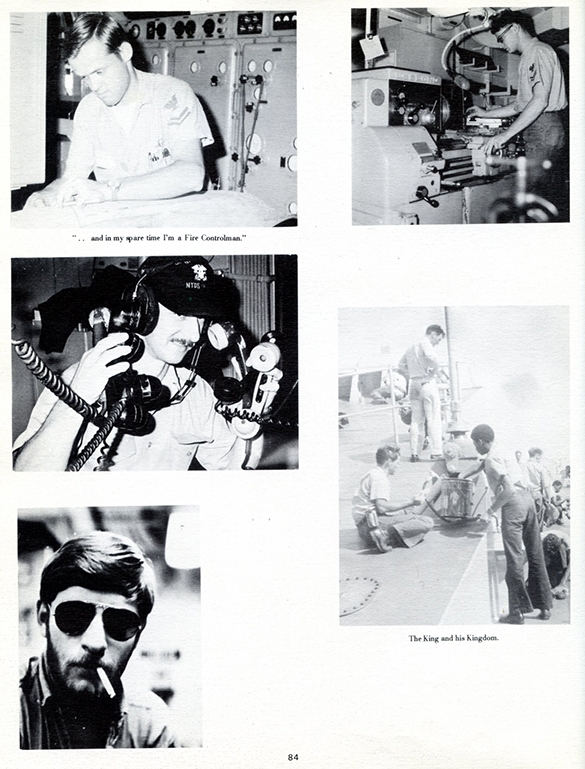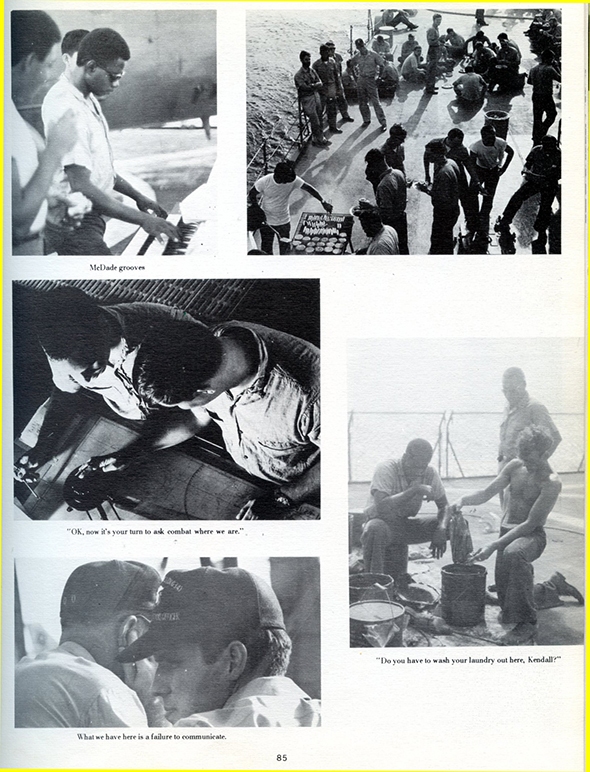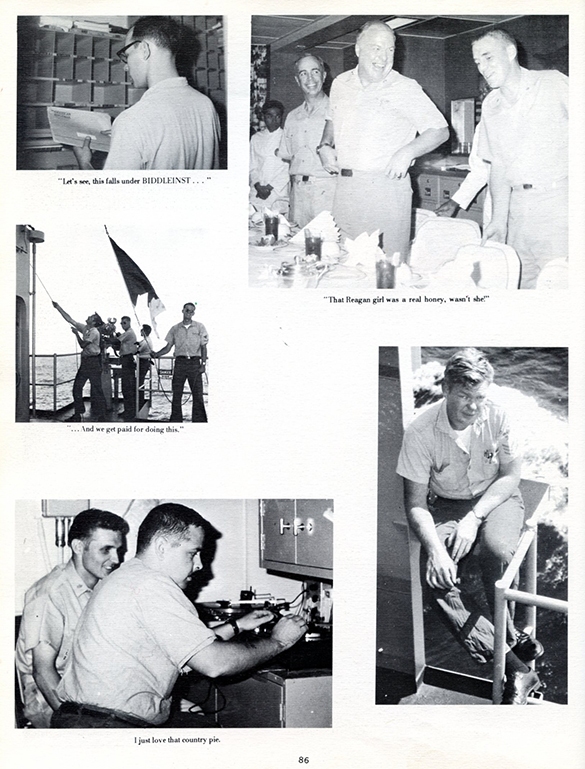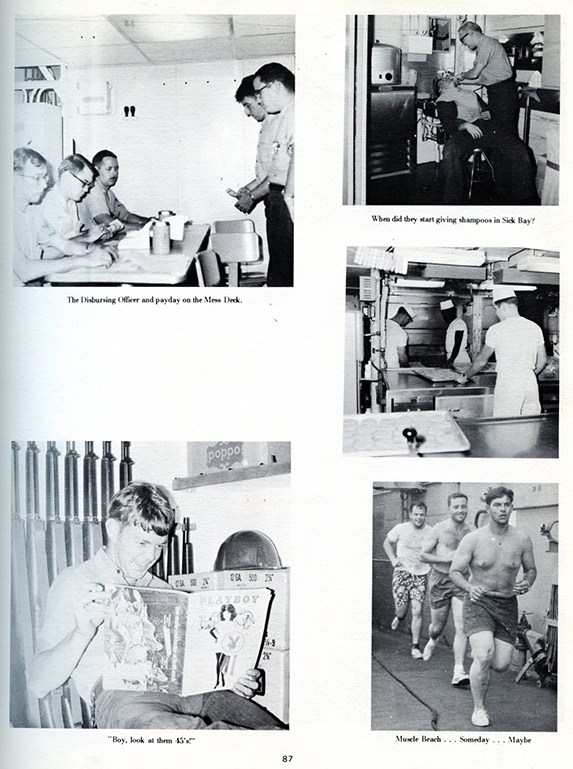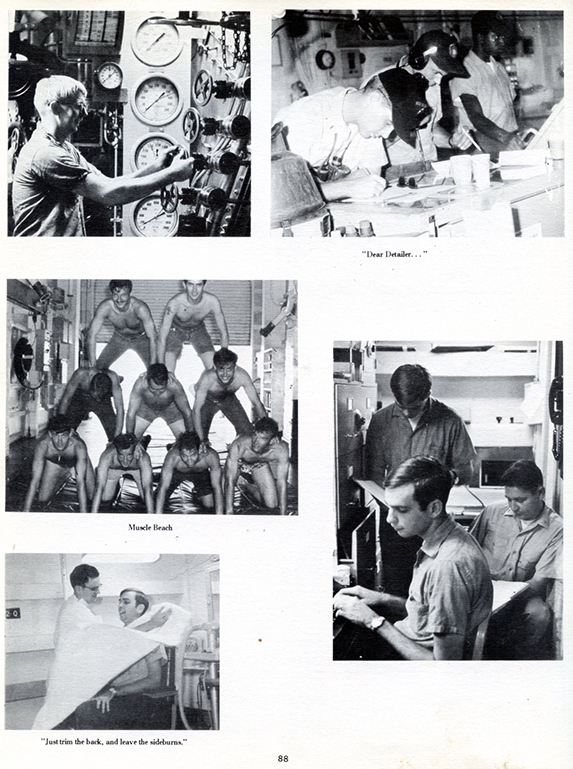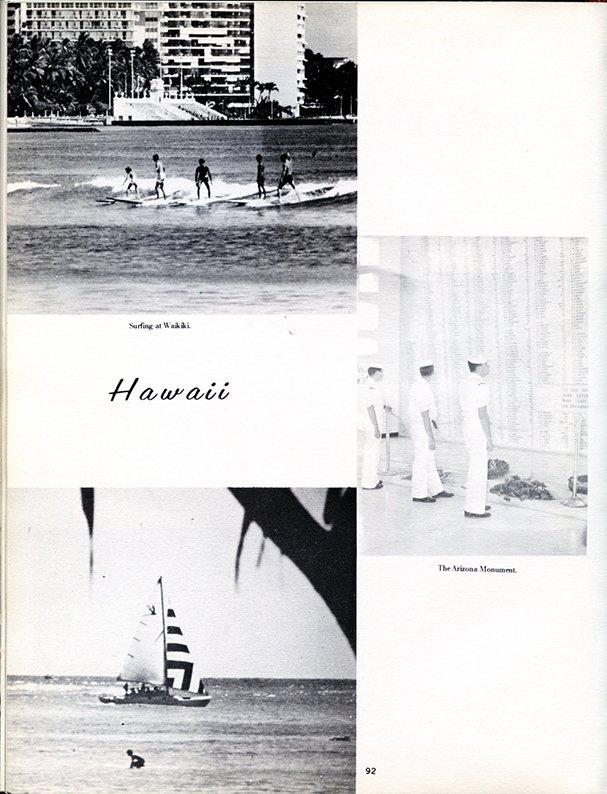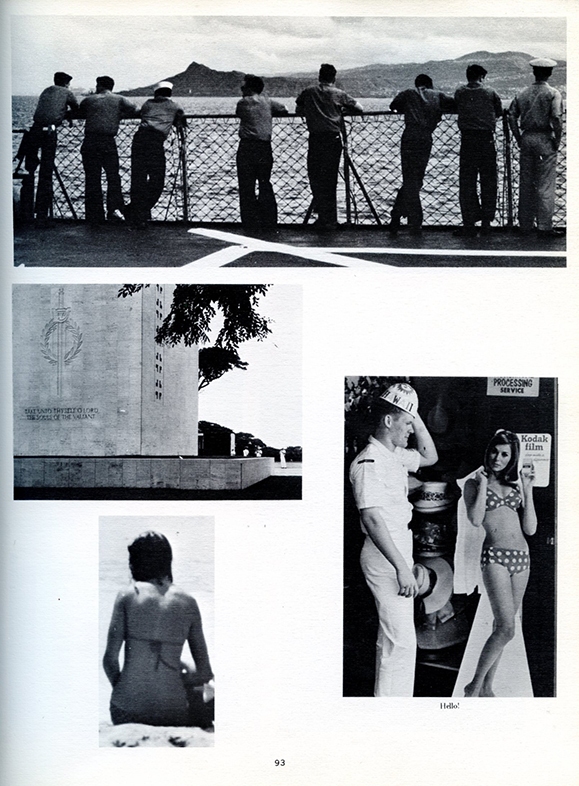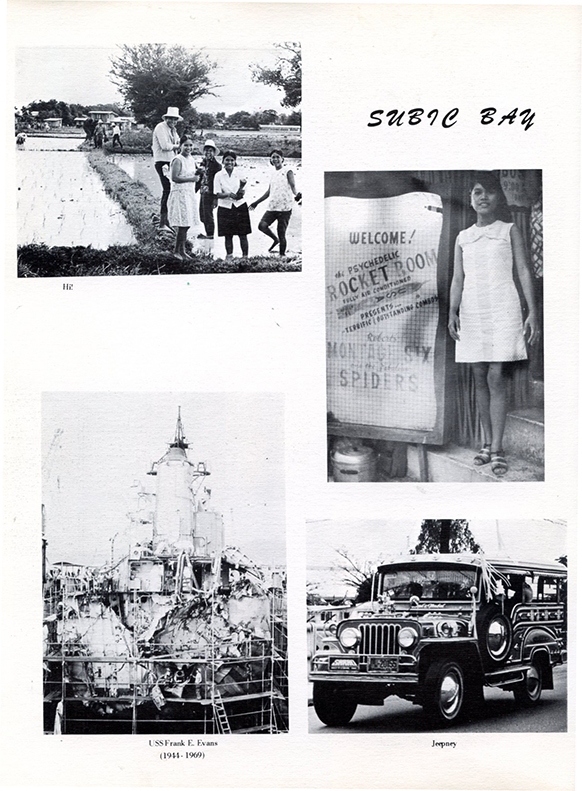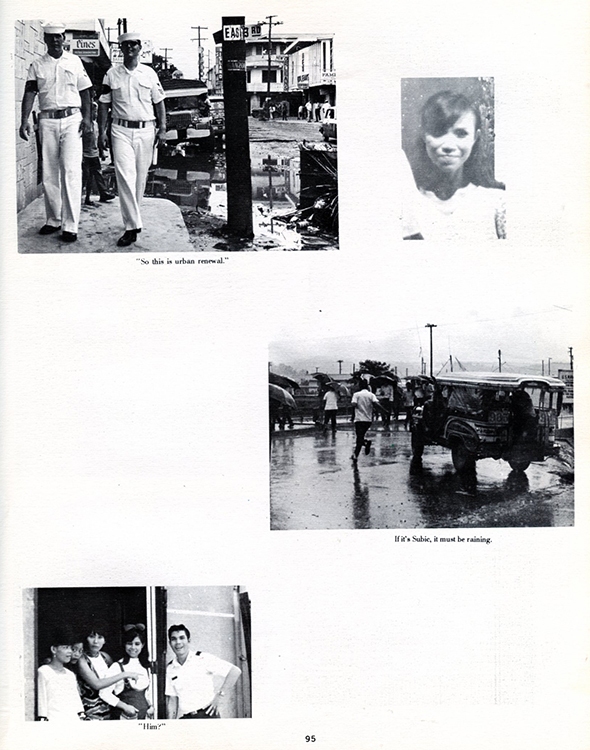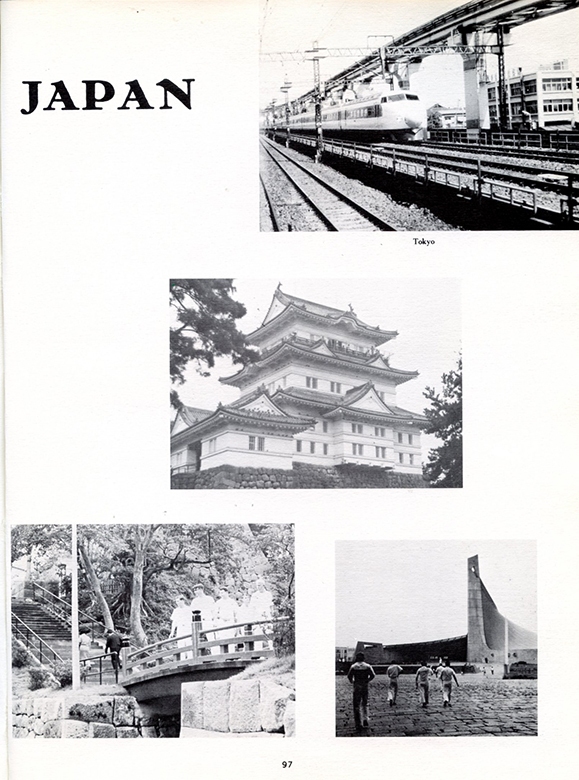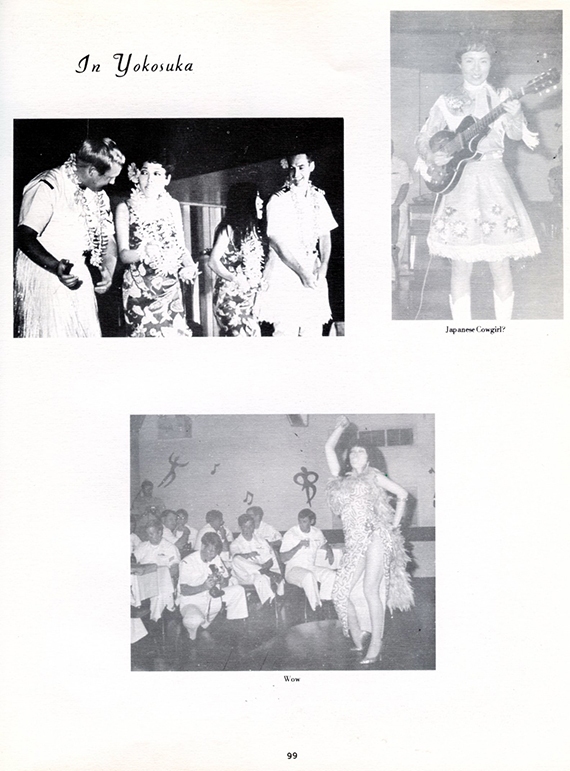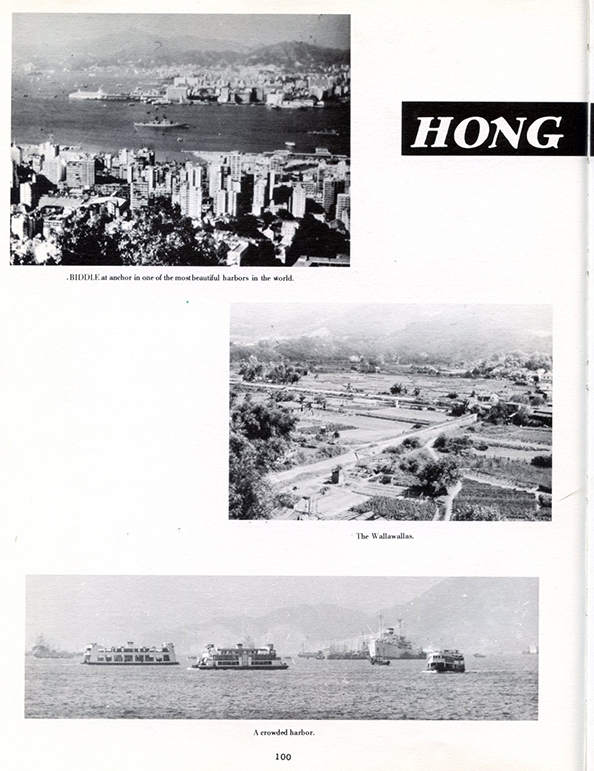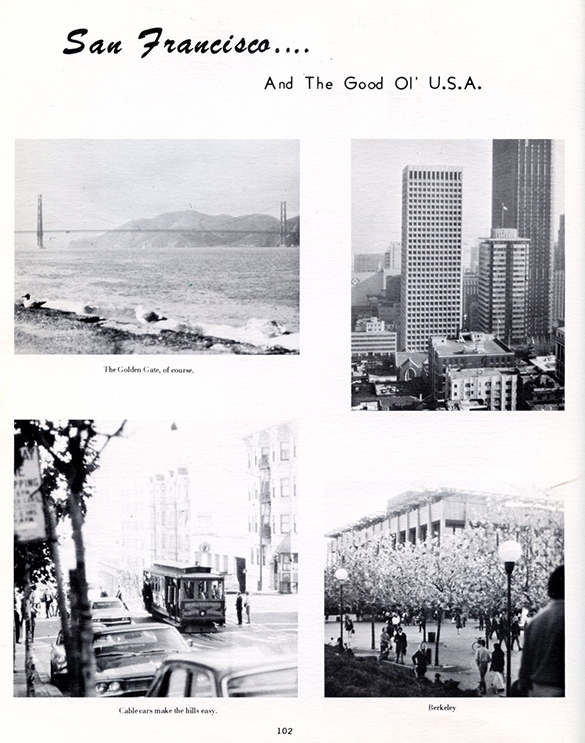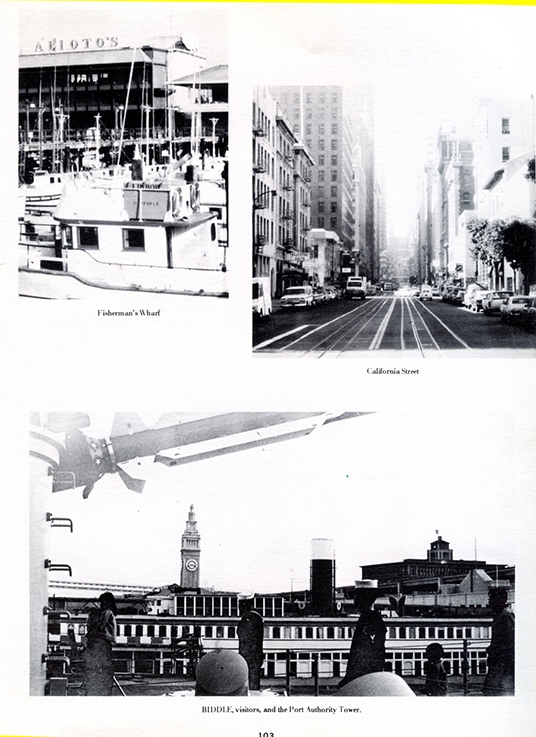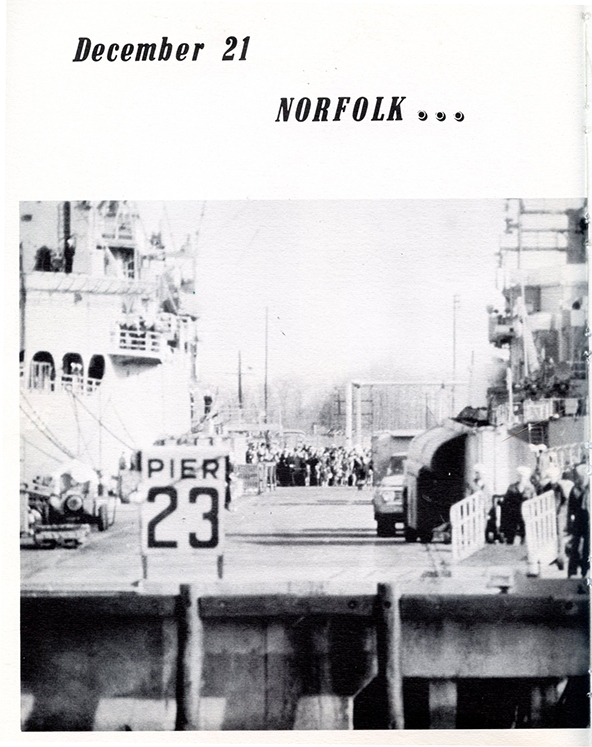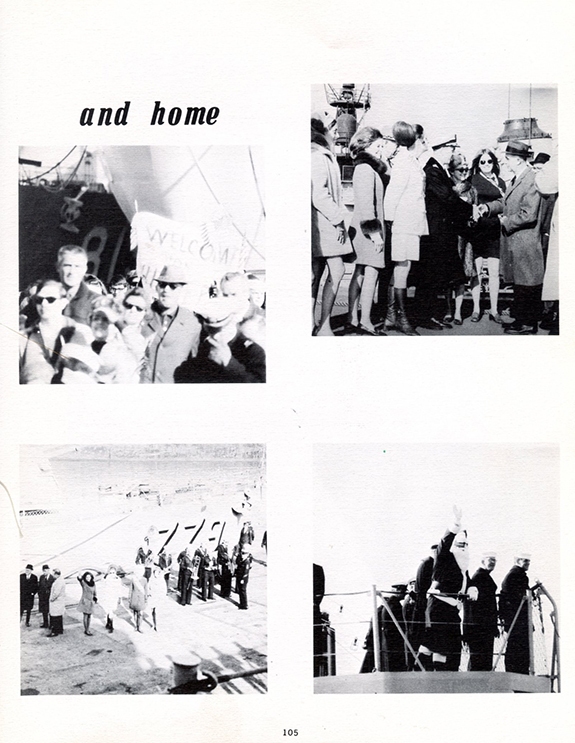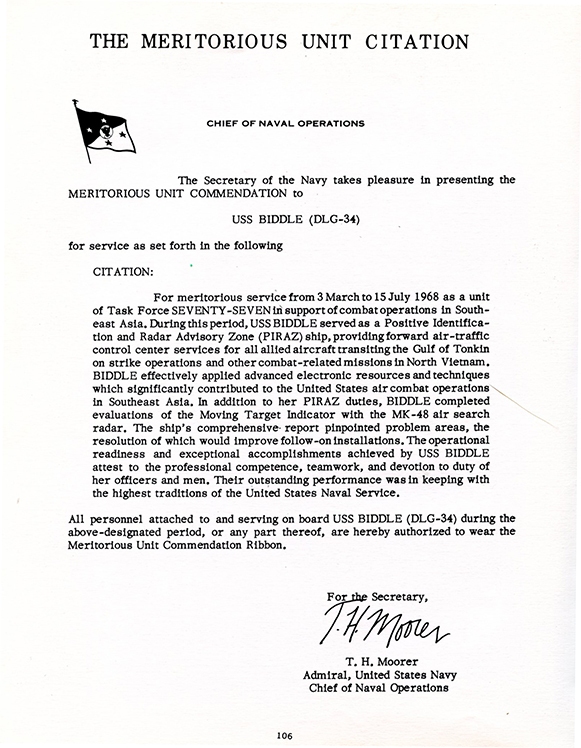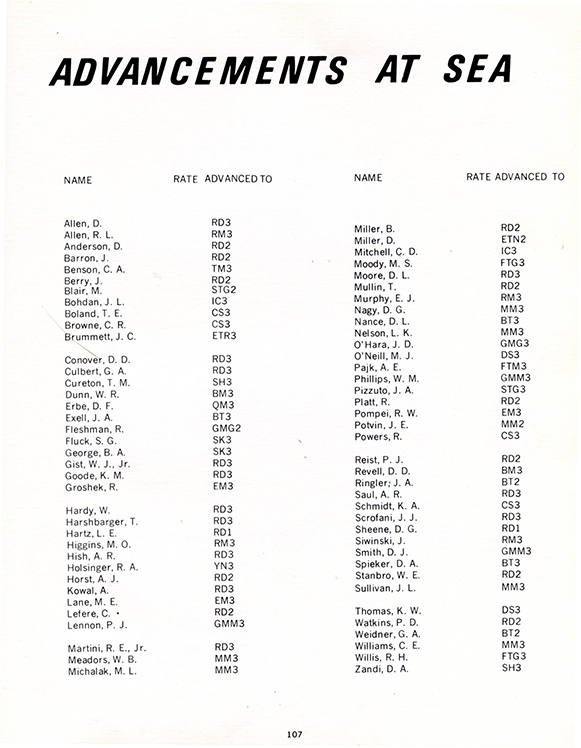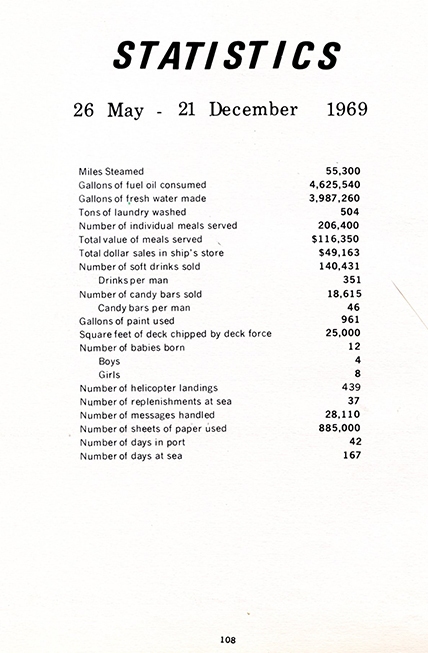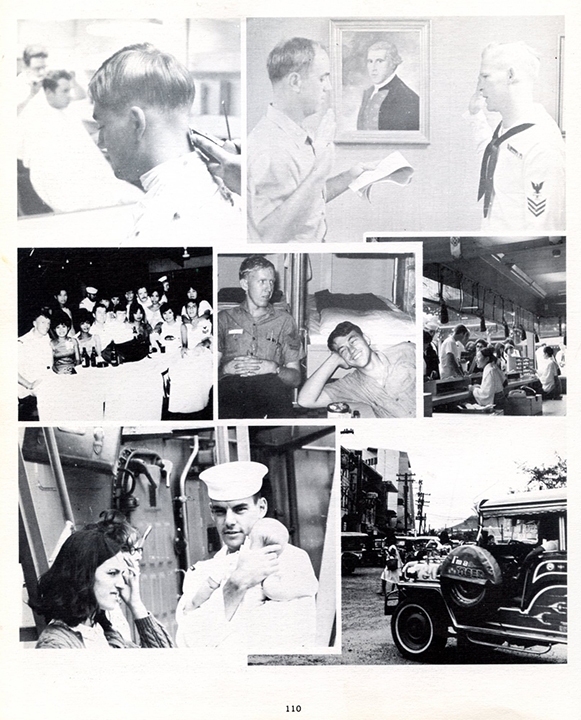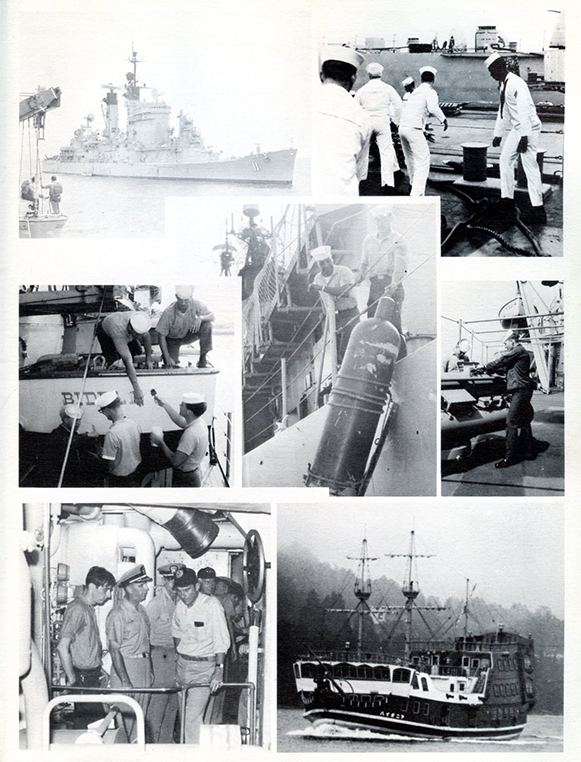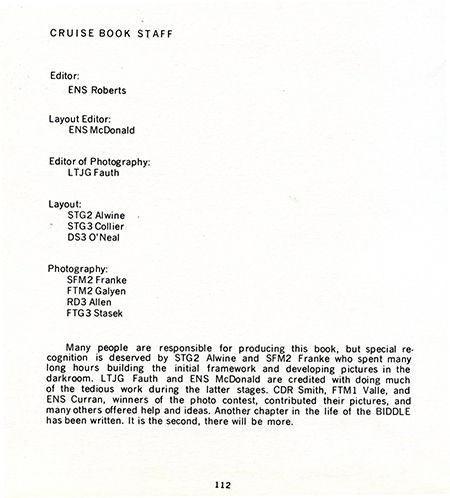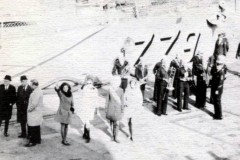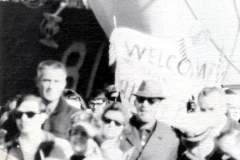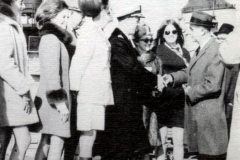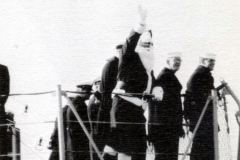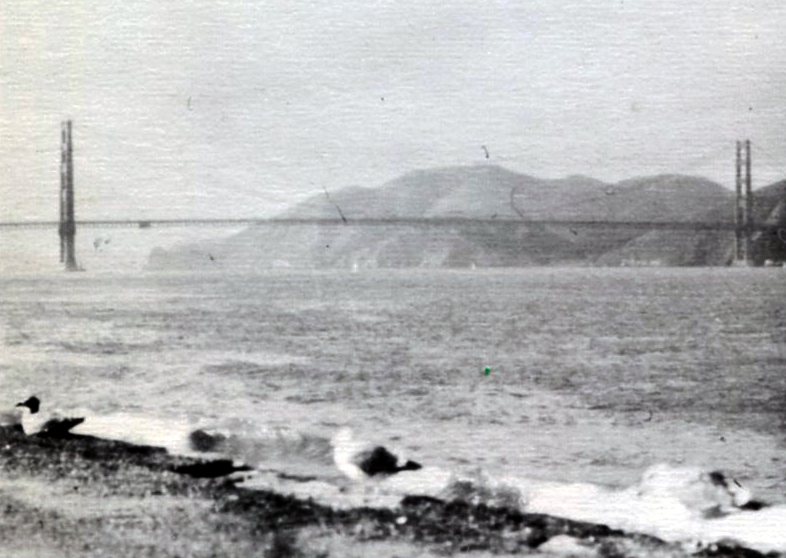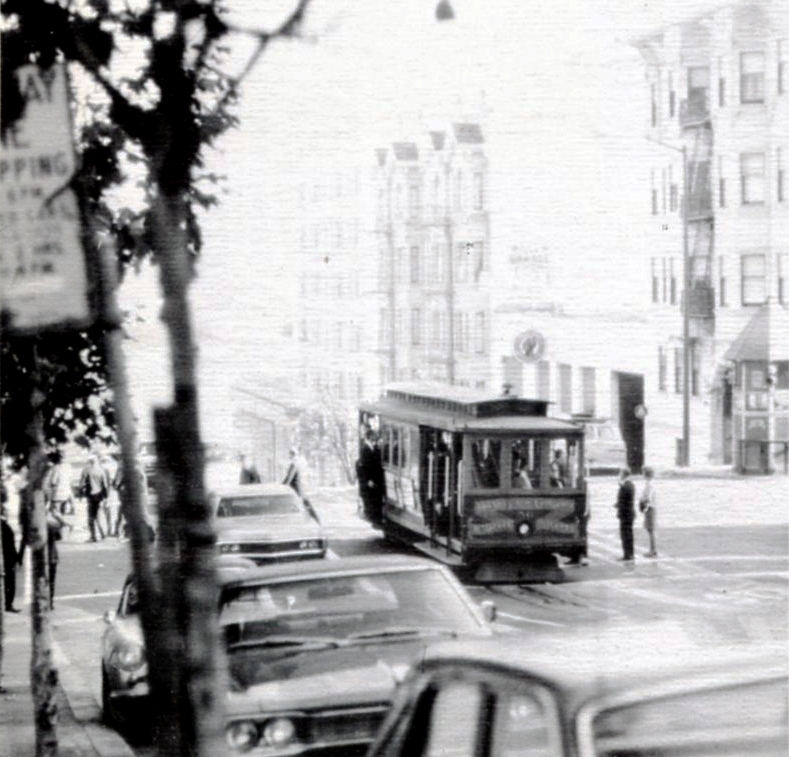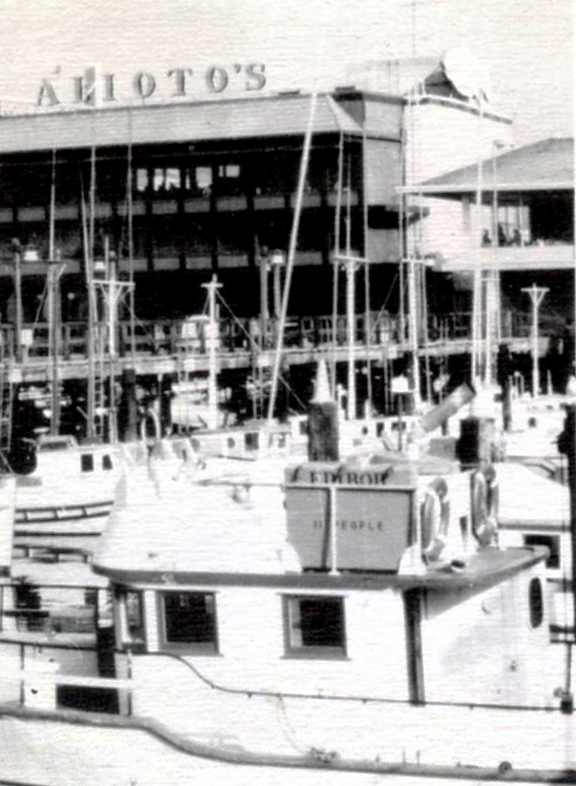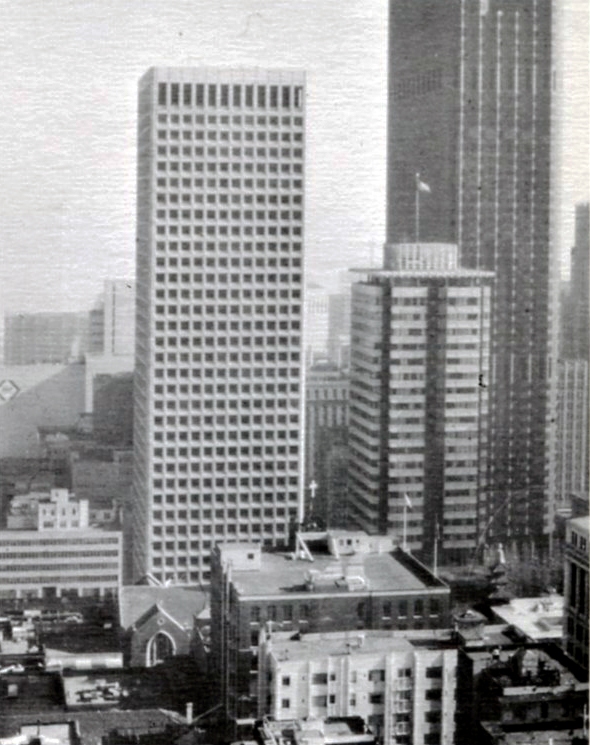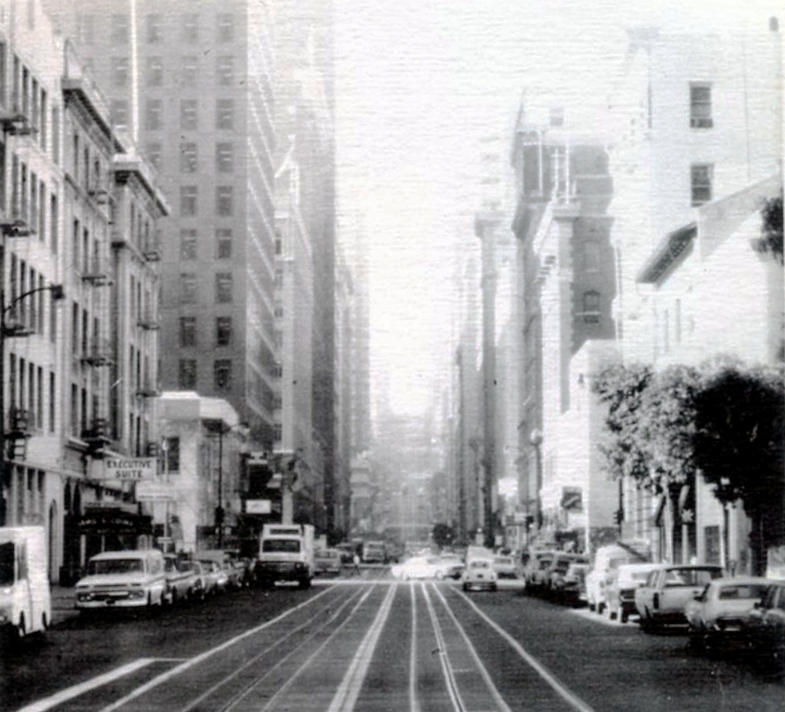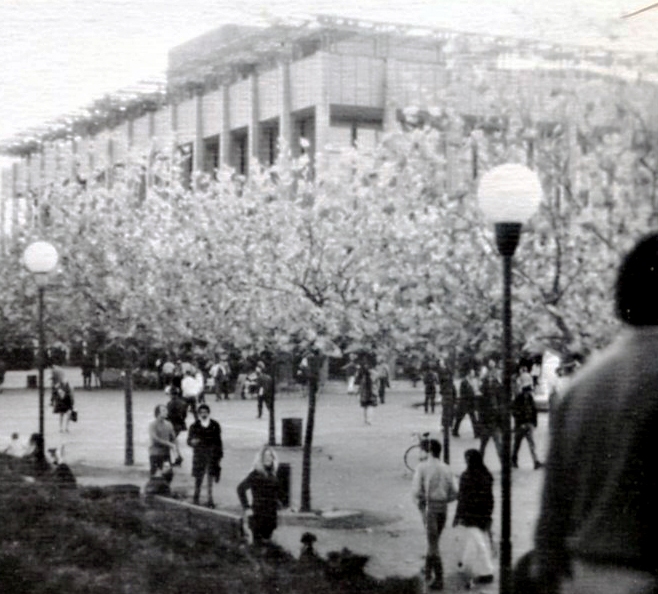
30 June, 50 years ago, was my last day aboard the Biddle. That day, I went to the quarterdeck, dressed in civvies, and said to LTJG Fauth, I believe, “I request permission to leave the ship, sir.” We shook hands, exchanged farewells, and I headed for the parking lot. I then drove — in that recently purchased Barracuda — to my family’s home in Springfield, Mass. I spent a couple of weeks there, I believe, visiting friends, etc., before beginning my first cross-country drive.
This post is going to include a big bunch of photos from my time on Biddle that I rediscovered in recent days. I’m going to try to add them later to the appropriate earlier posts, but wanted to post them all in this fond farewell to Biddle.
I’ve come to appreciate over the years the depth and richness of my experience on DLG-34. I was able to have adventures and make it through calamities few other friends and acquaintances of mine had. I’ve been able since to share “sea stories” about helo rides, stormy seas, bars in Subic, etc., that enlivened many a conversation.
I’ve enjoyed very much working on this blog and remembering the times and the people with whom I shared them on Biddle. I’ve been in touch with the three other Ensigns on board — Curran, Graham, and Roberts — over the years, especially since the Biddle‘s all-hands reunion in Virginia Beach in 2006. Indeed, here’s a picture of us from that event.

Sure, we look old. And this was 14 years ago!
I was so lucky to have great resources with which to complement the blog. Shipmate Jim Treadway’s excellent Hard Charger: The Story of the USS Biddle (DLG-34) was my reference for what happened when and who was involved. Buy it on Amazon!
At the 2006 reunion, shipmate George Boyles provided us a CD with a video compiled from film he and fellow GMG2 Jerome Kuczmarski shot during the deployment. The video also contained still photos from the Biddle’s construction, commissioning, and decommissioning, but the film shot May-December 1969 was an especially valuable addition to the blog. Thank you, shipmates!
I’ve touched base with a few other contemporary shipmates through this blog, at least through the posts on Facebook, which has been great. I’ve also enjoyed connecting remotely with other Hard Chargers, from different eras. I don’t plan to post on the Biddle group page about my remaining months on active duty, because it’s not what the group page is about. For those who may find information about Naval Special Warfare Group, Pacific, and Coronado/San Diego in 1970-71 interesting, I’ll post something on the Facebook page when I figure out how you can sign up on the blog for email announcements of new posts.
Thanks to Biddlemen for viewing this blog. Hope you’re all well. I hope you have found the photos from Biddle interesting. It is a perpetual annoyance to me that many of the the best photos I took during the deployment and cruises are not here. My slide projector and the 140-slide-capacity carousel with those photos were stolen from my car in the South Bronx in July 1970. But that’s a story for a future post. 🙂
Here’s more photos. If you click on the galleries, you’ll see larger images and captions.
Ship’s gig operating outside the Panama Canal.

A gallery of images from the stop in Hawaii on the way West, including scenes of Nu’uanu Pali.
Manila
Helo ceremonies, including a cake dropped on deck.
View from the Tokyo Tower, showing the green grounds of the Imperial Palace.

Yoyogi National Gymnasium, Tokyo, site of the swimming and diving competition at the 1964 Olympics.
A temple in Tokyo. Buddhist or Shinto, I can’t recall.
We held a ship’s party in Japan and this is another photo from that event. In the rear, paying rapt attention to CAPT Olsen, are LT Berquist (on right) and me.

LT Meyers got an early-out. Instead of waiting until we went into port, the Navy wanted him out right away. He was transferred by highline to a supply ship during underway replenishment. Not as dramatic as ENS Graham’s arrival by helicopter hoist, but still . . . .
Hong Kong
Scenes from the China mainland, within borders of Hong Kong. These were taken by ENS Curran. I had the duty.
Biddle‘s first shotgun was USS Meredith (DD-890), but later in the deployment, we were joined by USS Renshaw (DD-499).
Scenes from plane-guarding
The post about the storm that hit us in early December mentioned the presence of an owl at the bow. It seemed amazing that it would end up on Biddle when we were quite far north of Hawaii. But here’s proof.
More photos from San Francisco, including scenes from UC Berkeley
More from the Caribbean cruise, including a picture of me and Margarita.
We had a missile shoot on that cruise
Finally, a couple of artsy-fartsy pictures
Th . . . th . . . that’s all, folks!

